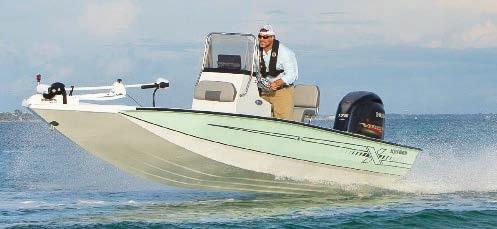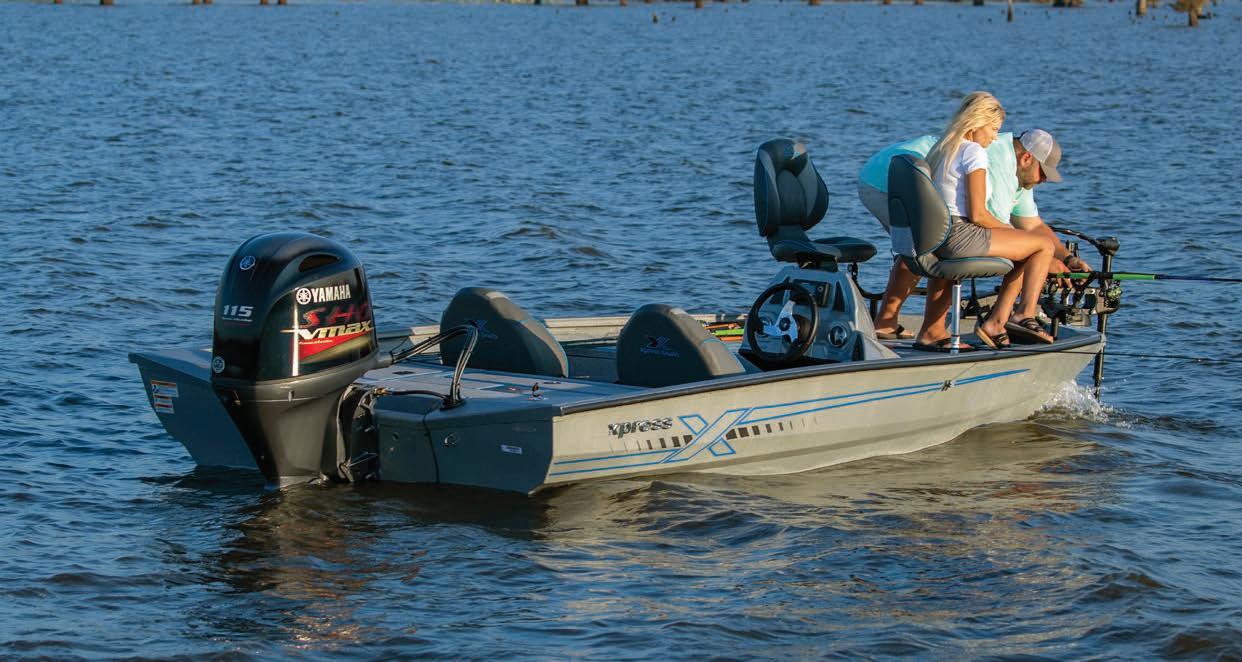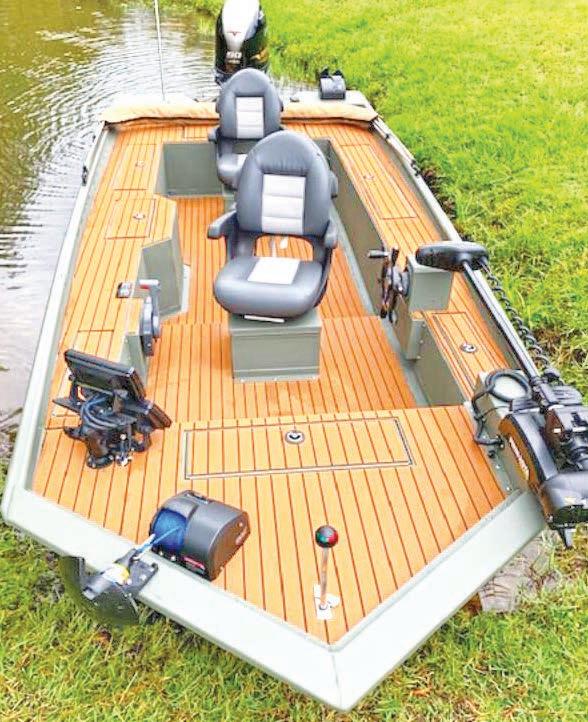
























































































































































































































 By Astrid DeGruchy
By Astrid DeGruchy
icked Tuna is a show my ancé, Capt. Brandon Storin, and I like to watch. As an avid angler betrothed to a charter captain, I think it’s pretty cool to watch these guys reel in giants, but it’s even cooler to do it Brandon and I wanted this experience, so we went on a charter with the legendary crew of the “Hard Merchandise.” Docked in Gloucester, Mass., the boat is very spacious with a heated cabin, full head and all the latest electronics. Capt. Joe Marciano and his Mate, Jay, are exactly as they are from the show, and their skillsets for catching

During our time with them, conditions were a bit rough. It called for us leaving the docks earlier than anyone else, and while riding out, you could really see how meticulous they are in each part of the rigging and set up. During the boat ride, conversation was great, with plenty of laughs to go around. Before we knew it, we were at the tuna grounds.
In the midst of catching and soaking baits and waiting for the bite, the crew made us fresh breakfast and it was amazing. We had bacon and scrambled eggs with lobster.
e experience is very much like what you would expect from watching the show. ere’s lots of refreshing baits and waiting for a bite. When they mark sh on the sonar, the enthusiasm from the crew is amazing, just like on television. Capt. Joe and Jay jump up, yelling “WE’RE MARKING!” Adrenaline starts pumping with anticipation as you hope everything is lined up perfect enough to get a bite.
Fortunately, we did get tight, and I have never seen a sh take such a wild and ferocious run… several times. I was up to battle this sh with coaching from Capt. Joe and Jay. ere is nesse needed to ght a giant like this, and a cra in staying tight and knowing when to let him run. Every second spent reeling elevated the hope that we might land this big tuna. Yet there was also anxiety. If you’ve watched the show, you know that losing one of these monsters is a very real possibility.
We battled the sh for a while. Gaining where I could, adrenaline kept me pumping while the crew maneuvered the boat. e communication is constant as everyone works together.
Finally, I saw this huge beast start surfacing. Capt. Joe moved in with the harpoon, ready to take the shot. Everything happened so quickly! e beast surfaced, and Capt. Joe drilled it with a perfect gill shot. It wasn’t over yet, but it was just a matter of time. A er the sh made one last run, taking a bunch of rope, we hauled it back in and roped its tail. At that point, I knew I had landed my top bucket-list sh.
It was an amazing experience, and it felt like we were literally in an episode of Wicked Tuna. What you see from the show is what you get in person. ere is no script; nothing is fake. ere is only grit, talent and hope, and these guys have all that.

e Hard Merchandise team recently launched Angelica Seafoods, where one can order fresh blue n, lobster, scallops, oysters and more to be delivered to your door. If you plan a trip to Boston and want to catch a sh of a lifetime, book a charter with the Hard Merchandise.
For more information on the Hard Merchandise, visit www.angelica sheries.com/fv-hardmerchandise.
IG: @catching_astrid @bnmbean @hardmerchjoe @melodyredwing @hardmerchandisejay.
Have you ever dreamed of holding a $100,000 bill in your hand? How about a group of bills that includes $100,000, $10,000, $1,000 and $100 bills? Now you can, with these gold currency reproductions from the O cially Licensed Smithsonian® Series-1934 100 mg 24-Karat Gold Certi cates, which includes all four of the above Notes!









The actual Series-1934 Gold Certificates were legal tender, but were not intended for circulation—in fact private ownership was banned. Rather, these Notes were intended for transferring funds between Federal Reserve banks. The Certificates legally represented their worth in gold, and didn’t require a forklift to move!





By 1960, the Notes had served their purpose, and most were destroyed. Only a small number still exist, including those held by the Smithsonian.


These replica Series 1934 Currency Notes were reproduced from originals housed at the Smithsonian— and include the official Smithsonian sunburst. Best of all, using state-of-the-art




technology, 100 milligrams of 24K gold are transformed into currency-sized works of art! Each will arrive graded in Gem Uncirculated (Gem UC) condition by Paper Money Guaranty (PMG).


For this first-ever release, only 5,000 of these Series 1934 Gold Certificate Currency Notes were produced. These are the very first of their kind, created with 100 mg of 99.9% pure gold. Get the complete Set or get them individually. They’re going fast, and our limited supply will not last, so secure yours now!
1934 Smithsonian 24k Gold Certificates



$100 $49.95 SAVE $10, Only $39.95 each! + s/h $1,000 $49.95 SAVE $10, Only $39.95 each! + s/h $10,000 $49.95 SAVE $10, Only $39.95 each! + s/h $100,000 $49.95 SAVE $10, Only $39.95 each! + s/h
Acquire the entire collection and SAVE even MORE… 4-Pc. Set $199.80 SAVE $50+, Only $149 each! & FREE SHIPPING
For
product total over $149 before
Not
with
on












Please mention this code when you call.


That’s quite a headline for a 17-year-old high school student from Clewiston, Fla. who loves bass shing.
I spoke with Hilary while she was in Palatka, Fla. preparing to sh the Florida Bass Nation tournaments on the St. Johns River, and her enthusiasm and passion for the sport of bass shing were impressive.
Last year, at 16, she nished h at the State Championship of the Florida Bass Nation with a total weight heavier than 19 pounds. She’s hoping to do even better this year.
I asked her if she could remember when she rst started shing, and she laughed as she guessed that she was “probably only 2 years old.” A er all, she does come from a pretty well-known family of professional bass shermen.

Her grandfather, the legendary Roland Martin, is one of the greatest bass shermen of all time. Her father, Scott, won the 2011 Forest Wood Cup Championship, and also has 45 top-ten nishes and eight tour victories in the FLW and hosts the Scott Martin Challenge.
But things are di erent today than they were
 By Don Norton
By Don Norton
Iin the past. Today, social media is the key to reaching your audience, and Hilary has done an incredible job on both YouTube, with over 100,000 subscribers, and Instagram with 103,000 followers.
Most of her videos are bass shing, although she’s had some very interesting saltwater shing videos, as well.


Hilary said she started taking bass shing seriously when she was 15 years old, and at 16, joined the Florida Bass Nation Series.

She has her own bass boat, a 20’ Skeeter FXR, with a 250hp Yamaha, but she also shes out of her dad’s boat from time to time, because, “it’s got all the goodies,” she laughed.
Her biggest bass, a whopping 9.1-pounder was caught ipping a black/blue Sweet Beaver along the edges of cattails on Lake Okeechobee when she was only 14 years old. She hopes to break that personal best soon.
Her shing arsenal includes a Favorite Phantom Series shing rod, a Shimano Curado reel and braided or uorocarbon line, along with her favorite bait, a Zoom Speed Worm.

“I was shing out of a kayak and I saw this
far away, so I threw my Speed Worm just past the mark,” she recounted. “I started a fast retrieve when a big bass came up and just exploded on it. at sh drug me around for what seemed like forever before I nally landed it. It weighed just over ve pounds. e cover picture of me holding a bass was taken the day a er.”
Listening to her tell that story, her excitement, enthusiasm and passion for bass shing became even more obvious.
If you haven’t seen one of her videos on YouTube ( eReelHilarySue), I’d strongly recommend you check them out. ey’re fun to watch, and you might just learn something. She’s a natural.
What an incredible future this beautiful, talented young lady has in store. I think she’ll be one of the biggest names in professional bass shing in the years to come.
Don Norton is co-publisher of the Okeechobee edition of e Angler Magazine.
The very best hunting knives possess a perfect balance of form and function. They’re carefully constructed from fine materials, but also have that little something extra to connect the owner with nature.

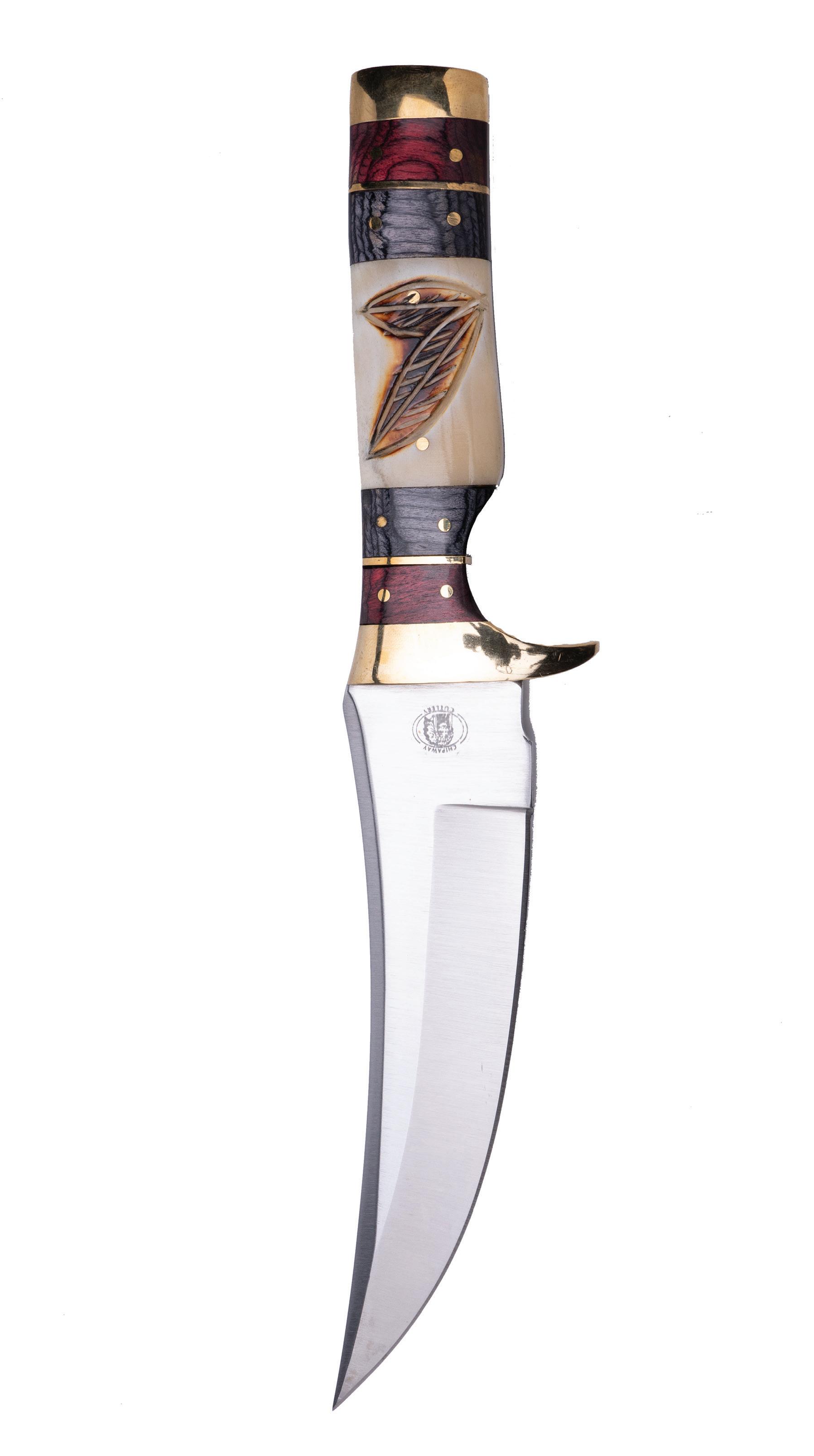
If you’re on the hunt for a knife that combines impeccable craftsmanship with a sense of wonder, the $79 Huntsman Blade is the trophy you’re looking for.
The blade is full tang, meaning it doesn’t stop at the handle but extends to the length of the grip for the ultimate in strength. The blade is made from 420 surgical steel, famed for its sharpness and its resistance to corrosion.
The handle is made from genuine natural bone, and features decorative wood spacers and a hand-carved motif of two overlapping feathers— a reminder for you to respect and connect with the natural world.
This fusion of substance and style can garner a high price tag out in the marketplace. In fact, we found full tang, stainless steel blades with bone handles in excess of $2,000. Well, that won’t cut it around here. We have mastered the hunt for the best deal, and in turn pass the spoils on to our customers.
But we don’t stop there. While supplies last, we’ll include a pair of $99 8x21 power compact binoculars and a genuine leather sheath FREE when you purchase the Huntsman Blade
Your satisfaction is 100% guaranteed. Feel the knife in your hands, wear it on your hip, inspect the impeccable craftsmanship. If you don’t feel like we cut you a fair deal, send it back within 30 days for a complete refund of the item price.
Limited Reserves. A deal like this won’t last long. We have only 1120 Huntsman Blades for this ad only. Don’t let this beauty slip through your fingers. Call today!
®

$99 value-
Blade
Stauer Clients Are Saying About




Knives
knife is beautiful!”
Crescent,
feel of this knife is unbelievable...this is an incredibly fine instrument.”
Arvada, CO
Southcross Drive W., Ste 155, Dept. HUK864-01 Burnsville, Minnesota 55337 www.stauer.com
is only for customers who use the offer code versus the listed original Stauer.com price.
residents please call 1-800-333-2045 regarding Proposition 65 regulations before purchasing this product.
Afford the Extraordinary
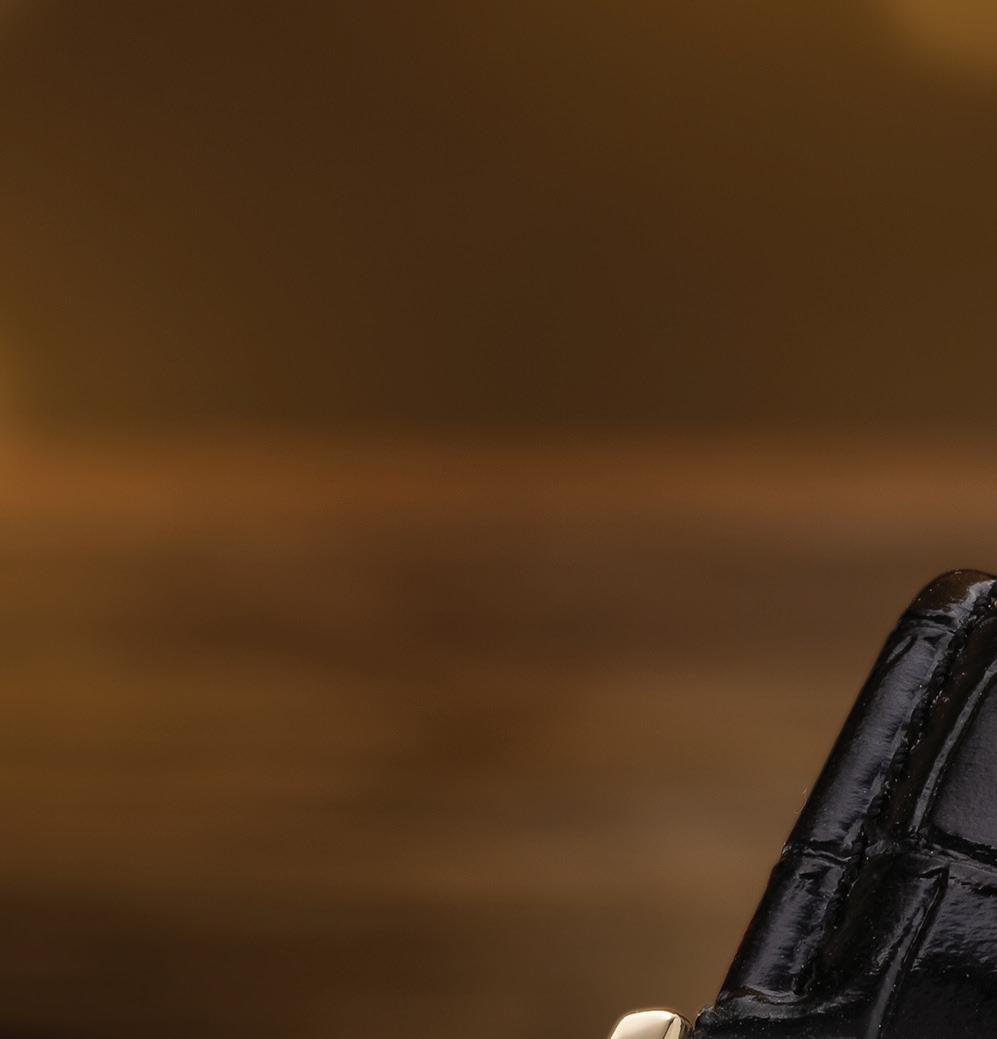


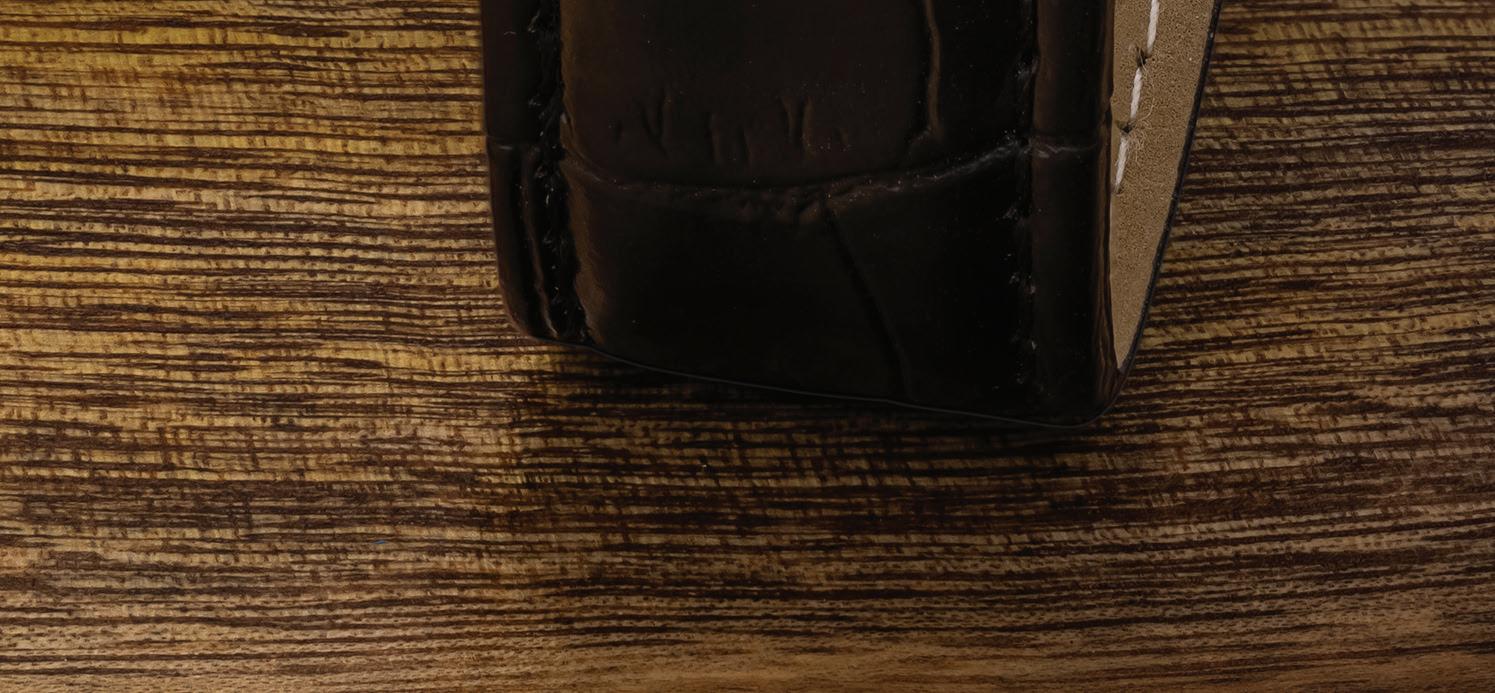




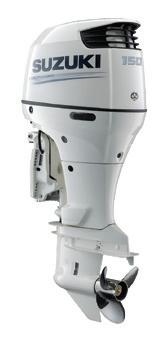
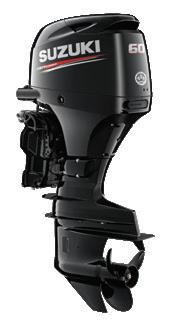



 By Mark Engler
By Mark Engler
Anewbook by a retired New York university professor and avid fly fisherman explores the lines and ties between angling for trout and searching for wellness.
In “Casting and Mending: How Therapeutic Fly Fishing
Heals Shattered Minds and Bodies,” Patrick M. Scanlon shares and analyzes his experiences working closely with fly fishing groups dedicated to helping bring hope and hopefully a helpful dose of happiness to traumatized veterans, substance abuse sufferers, and breast cancer patients.
Scanlon examines and personally investigates evidence
for claims that fly fishing can promote physical recovery, emotional regeneration, and other healthful benefits for individuals afflicted with lifethreatening diseases and plagued by debilitating psychological anguish.

Despite some initial incredulity, Scanlon said he’s ultimately concluded that the evidence of fly fishing’s rehabilitative benefits is actually quite compelling. “I was a little skeptical, because a lot of people look at fly fishing as sort of magical and mystical, and I have never been quite certain of all that,” Scanlon said in a phone interview recently. “I’d
never really seen that for myself, so I was wondering if this was just going to be another sort of instance of love for the film, ‘A River Runs Through It’ — people thinking that just because you are out fly fishing you are going to get in touch with God maybe.”
However, the more time Scanlon spent with people participating in, running and volunteering for the fly fishing therapy programs -- like Casting for Recovery, Project Healing Waters and Fly Rod Warriors -the more he recognized firsthand the undeniably positive results.
Scanlon became convinced not only “that there was something real going on,” but also that “people were changing their lives through fly fishing.” As a result of his research, his own personal experiences, and the valuable new relationships he formed, Scanlon says he’s come to believe wholeheartedly in the curative powers of immersion in nature, and regards the legitimacy of such notions as “settled science.”
“There is very good evidence now, and has been for decades, that just being outdoors is good for us,” he said. “And especially being in specific kinds of places. The evidence seems to be sort of evolutionary, that we have spent a long part of our development as a species in these different locations, and among the ones that are most comfortable is being near moving water.”
“That has been demonstrated over and over again — that people who go into these different places like that, even if it is just walking in a park, they come out of it kind of refreshed, and their minds are cleared and they have a sense of
wellbeing.”
But there’s something especially potent for mind, body and spirit offered by fly fishing, said Scanlon. And trout in particular tend often to inhabit places that for humans too offer a “perfect spot” for spawning recoveries of physical and mental health, he said.
“When that’s connected with the benefits of fly fishing, the physical benefits, and the concentration necessary, you really have a source of wellbeing and a kind of therapy,” Scanlon said.
The promise of fly fishing’s physical benefits – the casting motion itself – was actually what led to the foundation of the Casting for Recovery breast cancer therapy program nearly two and a half decades ago.

Two women – former Orvis casting instructor Gwenn Perkins and Dr. Benita Walton, a breast reconstruction surgeon – hatched the idea on a fly fishing outing together in 1996. It occurred to Dr. Walton that breast cancer survivors might benefit greatly not just from the tranquility of spending time on a mountain stream, but from the act of fly fishing itself.
Walton recognized fly casting as a “therapeutic technique” that could aid in recovery “by exercising the soft-muscle tissue damaged by radiation and/ or surgery,” according to the Casting for Recovery website. She and Perkins then started tying together ideas for organizing all-expenses-paid weekend flyfishing retreats where organizers, medical specialists, fly fishing experts and support volunteers could meet with cancer patients

for counseling, education, sharing and above all, fishing, in a “retreat setting away from the stresses of home, work, and family.”
The initial Casting for Recovery retreats took place in Vermont in 1998, and CfR programs and have expanded across the country since.
For someone like Charity Rutter, who along with her husband, Ian, runs the Townsend, Tennessee-based R&R Fly Fishing guide service, the truth of claims that immersion in nature can heal is self-evident, and few activities are better to promote that healing than fly fishing – and, in Rutter’s mind, scarcely any place imaginable is better to cast for wild trout than the pure, protected, freeflowing waters of Great Smoky Mountains National Park.
“There is just so much to fly
fishing on a mountain stream,” said Rutter, who is among a number of fishing guides in Southern Appalachia who volunteer to introduce breast cancer patients and survivors to catch-and-release trout angling’s rehabilitative potential. “It is good physical activity to be outside, to be out moving. It is just so good for your brain and your body to just slow down and breathe in the fresh air.”
Rutter particularly specializes in teaching women to become more independent outdoor adventurers, and she runs women-only clinics for ladies of all ages and skill levels who are looking to become autonomous angler-explorers.
In Rutter’s experience, women beginners actually tend to develop fly casting proficiency quicker and easier than men.
Women often don’t approach fly fishing with erroneous preconceived ideas, unhelpful
habits or counterproductive muscle-memory associations that have to be cast aside for effective fly casting. For those reasons, women often enjoy success soon after they step for the first time into a creek with a fly rod in hand, she said.
“Women do tend to pick it up easily,” Rutter said. “A lot of times I kind of relate it to dancing. There just seems to be a lot more women that love to dance than men. There is just a real finesse to flycasting, I think. Not to say that men don’t have that, but I think it is just one of those things that comes very naturally to women.”
Learning a new and enjoyable skill in the face of great personal struggle is one of the aspects of the fly fishing retreats that is so rewarding to breast cancer survivors, said Beverly Booth, a Casting for Recovery program coordinator in North Georgia.
“We always hear from the participants how relaxing it is, and how happy they are to have
stepped out of their comfort zone to learn something they thought they would never learn,” said Booth.
In addition to discovering a marvelously empowering new pastime, the women also share camaraderie with others who are in the midst of similar health challenges, or who’ve gone through such struggles themselves. “Probably 70 percent of the participants have never been in a support group,” said Booth. “So they all are getting so much more out of it than learning how to fly fish.”
As for what instills fly fishing with such therapeutic vitality, Booth and Scanlon each say it’s a combination of the committed mental focus required to bring all the moving parts together to actually catch a fish at the same time one is absorbed by irresistibly enthralling surroundings.
“Water is healing, we know that,” said Booth, whose CfR retreats typically occur at White


 By Captain Jim Durham
By Captain Jim Durham
OwnerStriperFun Guide Service, Tennessee and Kentucky Walleye, Bass, Crappie and Muskie Charters, Superbaittanks.com, Captain Jim Marine Electronics and much more…
DATE OF REPORT: November 2022
Greetings to my readers! I hope that the world finds you and your family doing well!
WALLEYE FISHING ON THE POWELL, CLINCH AND HOLSTON RIVERS IN EASTERN TNCHEROKEE LAKE STRIPERS AND HYBRIDS - CUMBERLAND RIVER SAUGER - WALLEYE IN TN!
POWELL, CLINCH AND HOLSTON RIVERS IN EASTERN TN
Tennessee Walleye Charters offers Walleye charters on the Holston, Powell or Clinch Rivers in Eastern TN. The Clinch River fishing is year around and the Powell and Holston Walleye fishing
begins November 15, running through the end of March! We troll lures and use live bait! Be sure to book your Walleye trips on the Powell, Holston or Clinch Rivers in Eastern TN! You are really going to love this exciting way to fish these beautiful rivers!
The Striper – Hybrid fishing on Cherokee Lake (near Knoxville TN) is very popular with our clients. Throughout the fall, we troll live bait on planer boards 10 to 30 feet deep and also downline on suspended schools of fish, concentrating on main creek channel points. Beginning in December we then troll umbrella rigs!
The Striper and Hybrid fishing is simply off the chart! 20 and 30 fish days are frequent; TN allows catch and release! With three full time guides, StriperFun offers day trips on Cherokee Lake year-round (weather permitting).
We begin each fall Sauger - Walleye fishing on the Cumberland River (North Central, TN). Our techniques include jigging, live bait, and trolling a variety of lures. These trips begin December and run thru March 31st. The fishing is phenomenal!

All of these above trips book up in advance!
It is great to be alive and be a “free” American! I look forward to seeing all of you this year on the
water. Always remember to stop and shake the hand of a person in uniform or wearing garb that shows they are a veteran! Their service is why you speak English, can vote and can enjoy the freedoms you do! Until next time, blue skies and tight lines!
With full USCG and State licensing and insurance, all guides who take Captain Jim’s clients (13 guides on 12 waterways) can take you on a safe, fun and unforgettable fishing adventure! Check out all of our fishing services as well as our exclusive “online” store at www.striperfun.com or call 931-4032501 to make reservations today.

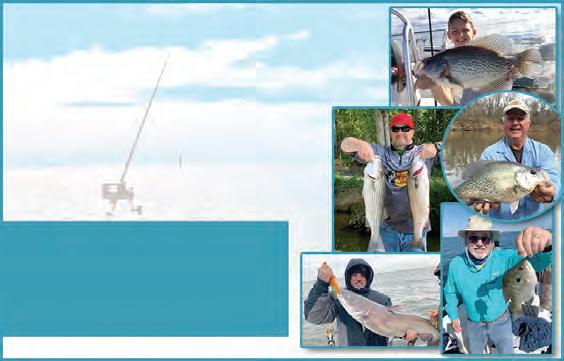 By Captain Joe Dennis, Father and Son Outdoors
By Captain Joe Dennis, Father and Son Outdoors
Striper season is open. You can find plenty of stripers in 30 – 45 ft this time of year. Creek channels are a great place to start. Look for bait and fish, then set your baits right above your markers. Live herring and shad will work the best. This time of year is also a good time to fish
with spoons. Jigging vertical is the best presentation. Some schooling activity is being reported on the lakes early morning and later in the evening. Cast plastic swim baits into the schools. Look for the BIRDS.
Bream – This time of year you can target both big bream and
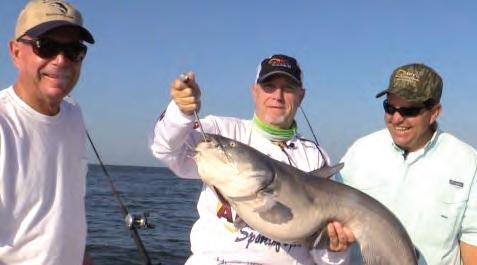

crappie on brush in 20 – 35 ft. Crickets are the best bait for bream, and jigs and minnows will be the best baits for the crappie. Lots of bream and crappie have made their way back to the brush piles. For the bream, you will catch all sizes on the beds but the cooler the water gets, the bigger the bream will get.
Crappie – With the weather and water starting to slowly cool down, lots of crappie will be headed to deeper brush, preparing for fall. Look for crappie on brush in 12 –25 ft. on Lake Marion and 20 – 35 ft on Lake Moultrie. Casting small jigs and tight lining minnows will work the best. For the nighttime crappie fisherman, set up your light around bridge pilings or deep docks in 20-30 ft. Draw the bait in and the crappie and bass won’t be far away.
Bass – Lots of schooling activity on the Cooper River in the mouths
of the old Richfield cuts. Top water and swim baits will work too.
Catfish – Still a lot of fish being caught at night. Fish in 2 – 10 ft of water. Stump fields and groups of cypress will also hold plenty of fish. Cut herring and shad work the best. The daytime drift bite should get better and better, as the water cools. Drift the creek channels in 30 -45 ft with Santee Cooper Rigs. Herring shad and white perch are working well. Lots of 2 – 10 pound fish are being caught.
Salt water Bushy Park – Lots of speckled trout and slot size reds are being caught mainly on live mullet/ mud minnow and shrimp under a slip or popping cork. Fish the edges of the creeks. Falling tide seems to be the best tide to fish. Lots of flounder are also being caught, but most are under size, so make sure you know your regulations.
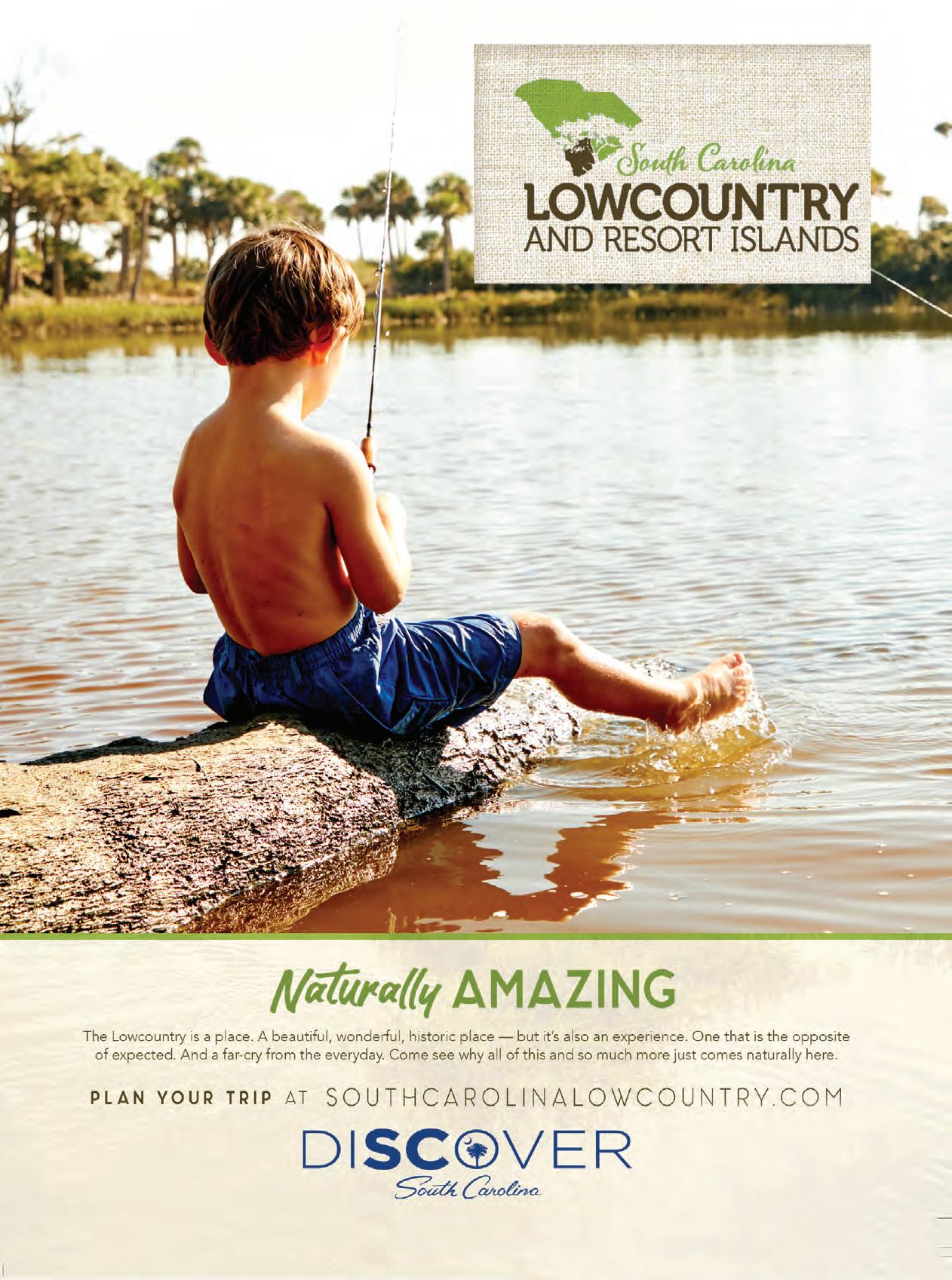
Excitement fills the air over the Chattooga and Chauga rivers for November. The helicopter has flown fish by the buckets, specially delivered from the Walhalla State Fish Hatchery, in Mountain Rest, South Carolina. We send special thanks to all the individuals at the Hatchery, to all the individuals from the US Forest Service, South Carolina DNR, and to the pilots flying the helicopter for two days in the river corridors. Now that the fish are swimming freely in the rivers, questions arise of where they were dropped. Heavy concentrations of fish are flown to the Delayed Harvest (DNR regulation explanation below) sections of both rivers, and into select locations outside of these areas.
“Starting November 1st through May 15, in the Delayed Harvest sections, the regulations
are as follows from the SC DNR: All fish caught must be returned to the river immediately after being caught. It is unlawful to possess fish in these areas. It is also unlawful to use or possess any lure except single hook artificial only (no live bait). What is an artificial lure? Artificial lure: means manufactured or handmade flies, spinners, plugs, spoons, and reproductions of live animals, which are made completely of natural or colored wood, cork, feathers, hair, rubber, metal, plastic, tinsel, Styrofoam, sponge, or string, or any combination of these materials, in imitation of or substitute for natural bait. Lures or fish eggs enhanced with scents or salts are not artificial lures.
Artificially produced organic baits are not artificial lures.” All of this paragraph is directly quoted and can be found in the South Carolina Hunting and Fishing
Guide produce by the SC DNR. There are always questions about what is and is not an “artificial lure”, if there are questions, please feel free to drop into our Fly Shop, and any of our staff will help out so that everyone is “legal” on the Delayed Harvest stretches of water.
Many fish are confused, after growing up at the hatchery, and now being free to roam endless miles of our free-stone rivers. Sometimes, it may take a few days to become acclimated with the new surrounds called home, prior to these trout starting to eat again. Other times, they start to feed immediately after being released from the chopper. Many forms of trick,
treats, or techniques may be used to catch these fish. Dead-drifting, swinging, and streamer fishing can all be used in a given day, depending on the water conditions and the fish reactions. Usually a good variety of colors, sizes, types of flies, and different depths of water, is a great idea to have prior to heading out for the day. We have all your needs here at our Fly Shop for a successful day out on the river. It is never too early to think about Christmas, just around the corner the holidays will be upon us. We hope to see everyone out on the rivers, and let’s all remember to practice “Leave No Trace”.
Karl and Karen Ekberg are co-owners of Chattooga River Fly Shop, located at 6832-A Highlands Hwy, Mountain Rest, SC 29664. Give them a call at (864) 638-2806 and visit their website at www.chattoogariverflyshop.com.

 By Becky Hulsey
By Becky Hulsey
Ithinkthe most common question we get regarding fly fishing is, “Where do I start?”
David and I recommend most folks start off with our 3-hour intro class. It gives folks an opportunity to see if they will like fly fishing without investing much time or money. We get you out on the water with a fly rod in your hand. No parking lot or grass casting. You need to be in the water with waders and boots, or wet wading if possible. Flailing a fly rod in the air on grass does not give you a true experience. Another option would be a 4-hour guided wade trip on waters. Make sure when you are looking for a guide or instructor that they have plenty experience teaching. Just because you can do, does not mean you can teach!
Another popular question David and I get is, “When should I book a class or trip?” We
provide services all year-round. Fortunately, here in North Georgia, fishing is typically available all year round. It just depends upon weather conditions. Have we had

enough, or too much, rain? Has it been too hot, or just too cold for comfort? We put all these weather conditions into consideration
when determining whether/where to do a class or trip.
Public or private water? Most clients ask us, “What is the difference and why is one better than the other?” Private water gives you a piece of catch-andrelease, trout water to yourself for a certain amount of time (4 hours/8 hours). These trout are typically larger because they are allowed to grow without being caught out and, most of the time, they are supplementally fed because there are so many larger fish in a smaller area. These fish will not stay in the private waters if they do not have enough food to survive. Public waters allow access for you to go back and fish. Trout stocking typically occurs in spring to summer months for public waters. Delayed Harvest season offers another option for public waters during fall to Continued,

County, Georgia’s Smithgall Woods State Park. “We always say that trout tend to live in beautiful places. You don’t usually find fish in ugly places.”
The sentiment Scanlon said he’s most often heard repeated is an expression of “the idea of being in the moment.”
“This is true across the board with a great many people who were dealing with a lot in their lives,” he said. “They would describe a sort of mindfulness -sort of like a form of meditation -- that just takes you out of yourself. It makes you just pay attention to the moment – you are not worried about the past, and you are not thinking about the future. That was the kind of thing that I heard again and again: They escaped themselves for a couple hours, or even longer, and they felt that escape to be really terrific. They found a way to get away from everything that they were worried about — to be alive to everything that was around them, to be alive to the water. That was a very common reaction to all the people I spoke with.”
The profound rewards and soulful blessings of these trout therapy sessions flow not just to the participants battling terrible disease and enduring chronic psychological distress, but to the organizers and volunteers who lend their expertise to the healing efforts.
“At every retreat, my staff will say, ‘We get more out of this than the participants do,’” said Booth. “It is truly amazing. It is so heartwarming it is hard to describe. It’s just an absolutely fabulous way to give time and energy and money and anything else we can do to make it all work.”
A few years ago on fly fishing guide David Perry’s Southeastern Fly podcast, Southern Appalachia casting guru Wanda Taylor related how she’d once spent a day working an event with members
of the United States Olympic Fly Fishing team and a group of Casting Carolinas breast cancer survivors.
The members of Team USA were deeply moved by the experience, Taylor said, and they spoke later about how humbling and inspiring the experience of fishing alongside the women bravely fighting harrowing odds had been for them. One of the world-class anglers confessed astonishment that a lady he’d fished with all day had seemed oblivious to her terminal diagnosis – and he was amazed how “she never reflected or acted that she was sick.”
“That’s called courage,” Taylor told the Olympian.
In her 2020 handbook “Thrasher’s Fly Fishing Guide,” Middle Tennessee fly instructor and drift boat float captain Susan Thrasher devoted an entire chapter to her experiences working with breast cancer survivors.
As fly fishers, we all dream of making that long, graceful cast to a big brown we have seen sipping bugs off the top of the water,” wrote Thrasher, whose Southern Brookies guide service focuses on Tennessee’s famed Caney Fork and Elk River tailwaters. “Presenting our handcrafted fly in just the right spot with the perfect drift is so rewarding, as we watch the trout rise and gulp down the fly, and then it’s ‘Fish on!’ My heart pounds just thinking about it! However, as rewarding as this is, I have found something that tops it all: Casting for Recovery.”
Volunteering for CfR retreats has given Thrasher a “tremendous sense of fulfillment,” and she encourages anyone to “jump at the opportunity” to either participate or assist in the events.
“You will find out, firsthand, why I believe that the reward and satisfaction that comes with the warm hug from a thankful participant or a volunteer is far greater than netting that big

Igrewup spending most of my daylight hours outdoors. The woods, creeks and ponds on our property were my playground. In the summer, we stomped through the creeks looking for crawdads during the day, and spent many nights setting trotlines for catfish. In the fall and winter, we traded our fishing rods for shotguns; walking the fields and treelines to hunt rabbits, quail and squirrels. There was always something to keep us occupied, and put some tasty treats on the table as a result. My grandfather was born in 1889. He was over 70 years old when I was born but he was tough as nails, and had the heart of an angel. He taught us to have a deep respect for the wonders of Mother Nature. We developed an understanding of the roles each creature plays in the circle of life…how some are prey and some are predators. And he instilled the notion, that even though we are at the top of the food chain, we should only harvest
what we needed for the freezer.
In those days, little thought was given to wildlife conservation and management. But Grandpa would say, “If you kill all your chickens for a big supper on Sunday, you won’t have any eggs for breakfast on Monday morning”. He was a very smart man.
Grandpa Jim, as everyone in the community called him, was a carpenter, a clock-maker, a gunsmith, and farmer. In those days, you had to be sort of a jackof-all-trades. People would bring their shotguns and 22 rifles to him to repair. Some had broken stocks, some had worn down firing pins, and I remember one shotgun with a crack that went about a third of the way down the barrel. He would firm up the action of the breach or make a spring for a tube magazine. And the cracked-barrel shotgun, he turned into a sawedoff scatter gun.
One of the widowed ladies in the community once needed some
kitchen cabinet doors replaced.
Grandpa made them from white pine boards and painted them to match the rest of her kitchen. The widow didn’t have much money, so she gave Grandpa her husband’s Browning Sweet 16 shotgun. It was in pristine condition, and Grandpa told me he might let me have it when I was old enough. The lady also gave him a mantle clock, but the mechanism was worn, the pendulum was missing, and the face was all scratched. But the wood cabinet was beautiful, and the etched glass door was quite elegant.
Grandpa made springs and gears for the mechanism. He hammered out a pendulum from a lead fishing weight, formed a chime from a piece of brass wire, and created a new face made out of the bottom
of a coffee can…which he then hand-painted numbers on. On my 18th birthday, he gave me the clock. At the time, I really wanted the shotgun, but I came to realize the clock meant more to him (and me) than any shotgun ever could. That clock still keeps good time today, and chimes every hour.
So, why the story about my Grandpa? Most all of us have people in our lives who have influenced us in a positive way… true role models. Individuals who have taught us and others how to hunt or fish, how to be self-reliant, how to be respectful of Mother Nature’s bounty, and how to be a good person. Although I never

spring months. There are marked sections on specific trout waters that have special regulations, like catch and release, for anglers to enjoy during this season. It is a great time to learn to fly fish on these waters because of these regulations.

“Should I do a full day class or a wade trip?” You should think, “What do I plan to get out of this trip/class?” Do you want to go out on your own? Or do you want to develop your skills? Our full day class is focused on helping you be able to fish on your own or be self-sufficient. After years of teaching, David and I have developed a great outline for our full day class, which has proven to be a great success. We are very blessed to have clients still fishing for over 25 years. A wade trip can also be instructional. However, you will probably focus more on
types of rigging like nymphing or streamers and how to fish them. I would recommend this for someone with some experience but other factors might come into play when making a decision.
Are your classes with a group of folks or can you do them independently? We offer both options. We can put together a class for a group of folks but most of our classes are booked for a client and a family member, or friend. David and I believe you do get a better experience with a less client-to-instructor ratio. Just be sure your gear is provided for your class. We like for new clients to use our gear for classes. We can give you plenty of insight into what gear you will need to get started, so you are not buying gear that you do not need. This can be a bit overwhelming for folks.
Visit Becky and David at http://www.blueridgeflyfishingschool.com for more information about the classes we offer and other information.
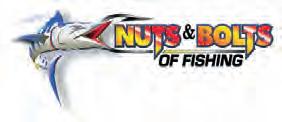
Working with Casting for Recovery and other support therapy groups has altered Scanlon’s perceptions not just of the sport of fly angling, but of mortality and the human experience itself.
“For me, writing this book was kind of life changing,” he said. “I met a lot of interesting
people, but almost all of them were on the razor’s edge. I was speaking to a lot of people whose lives were turned upside down. So it was very rewarding and it also gave me a sense of my own good fortune. There are many people who have really gone through a lot, and who are really going through a lot. And they found a kind of an anchor in fly fishing.”
Mark Engler is an outdoor writer and photographer whose work regularly appears on the Tennessee River Valley Geotourism website, www.ExploreTRV.com.
knew my great-grandfather, I’m sure he taught those things to Grandpa JJ, and he passed them on to my generation.
That’s what I’ve tried to do with my kids, and they turned out pretty good. Now they are passing on those same things to their kids, and it makes me proud. It’s never too late to share your knowledge, your passions, and your life
experiences to engage our kids and grandkids in the majesty of our outdoor treasures. It’s good for them, and it’s good for you.
Tight lines and calm seas, Capt. Cefus McRae.
Goodwater levels have always been a huge factor in fishing success on the Broad River, so river fishermen here breathed a huge sigh of relief when Hurricane Ian pivoted east, leaving the SC midlands on the western edge of the destruction swath.
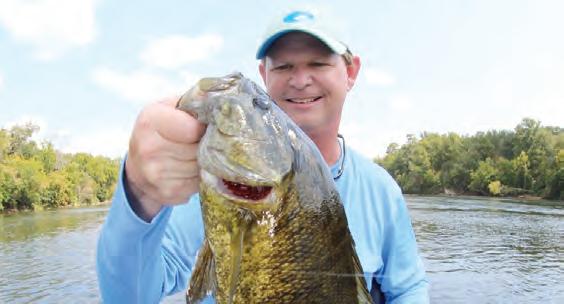
Flooding in the midlands is a sore subject, and not just because the river isn’t fishable. For years the Columbia area felt the effects of the October 2015 flood, a natural event that was deadly and far reaching. In the blink of an eye lives were lost, and thousands of people saw their properties devastated.
Old Man River always plays a role in flood events, and the Broad was no exception in 2015. In two days, the river went from carrying approximately 1000 cfs (cubic feet/second) towards Columbia to carrying over 73,000. Prior to the flood, levels on the Broad were perfect for fishing; flows below Parr Reservoir were below 1000 cfs. Then levels rose to 73,000. The Alston marker below Parr went from three feet to just over 23 feet in two days.
Some fear this kind of flooding is devastating to the fishery, but that’s not necessarily true, according to fisheries biologist Scott Lamprecht (ret.) When asked about the effects of flooding on our states’ rivers, Lamprecht said “there are plusses and minuses. Under certain circumstances flooding can help
the fishery and under others it can hurt.” Lamprecht explained that, after a hurricane, flooding can leave a negative impact on the fisheries, but the impact is not always negative. “Flooding can introduce new food items to the fishery. It can open up a myriad of food resources,” he said.
On the negative side, Lamprecht feels that sometimes flood water can displace young fish, negatively effecting the year class. But he reinforced my belief that the healthy, established, adult classes survive just fine through flood events. Simply put, and contrary to what many think, the big fish don’t get washed away.
Lamprecht also brought up a positive note about the timing of the recent flooding. “Had this flooding occurred during the spawn the impact would have been highly detrimental,” he said.
Fast forward to February, 2020. As bad as 2015 was, levels in a February 2020 flood were even higher, with over 85,000 cfs running through the lower Broad. And just as Lamprectht taught us, the fishery was just fine.
Fast forward to November 2022. We’re in the middle of a wonderful fall, and water levels are at safe and fishable levels. We may have missed a few days after Ian, but fishing through October was fantastic. With water temps staying in the 60’s, top-water remains effective.
Buzz-baits are very productive in November, as are Poppers and Spooks. Spinner baits should

also remain effective through Thanksgiving. Remember the fish are chasing shad, so keep your eyes peeled for signs of shad ruffling the surface. And remember the smallies in the river tend to school by size. Keep working an area if you connect with a good two or three pounder because there are likely more nearby.
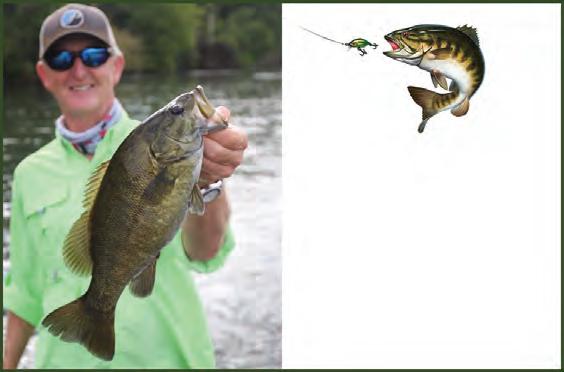
Please keep safety at the center
of your fishing. November can bring cold air temperatures, so dress accordingly, maybe even pull the waders out of the closet. Taking a change of clothing in your dry bag is never a bad idea in colder weather.
Tight lines everyone. Let’s hope the levels and weather cooperate to keep our 2022 season going well into December.

ChuckNorris jokes have had a longer life than, well, Chuck Norris. Websites proclaim his supernatural powers, his intimidating spirit, and his total mastery of his universe.
We’ve heard that “when the boogeyman goes to sleep at night, he checks his closet for Chuck Norris.” When Chuck Norris campaigned for Mike Huckabee, National Public Radio reported that the press would pass the time telling Chuck Norris jokes. One of them went like this: “Didn’t you know that Huckabee’s bumper stickers don’t have glue on them? They stick to cars because Chuck Norris told them to.”
A while back, Chuck Norris began making a comeback, as if he ever went away, by endorsing a laundry detergent. “Chuck Norris approved – a lot of fight for a little dough.” A detergent so
powerful it “makes grass stains stain themselves.”
It all does make you wonder what would happen if Chuck Norris fly-fished.
For example, if Chuck Norris fly-fished, would carp pucker on both ends?
Chuck would probably save a lot of money on tackle, because he would only need one rod. It would train to whatever weight he wanted and flex where he told it to.
None of his tackle would dare malfunction. If his waders leaked, it would be because they wet themselves.
The knots in Chuck’s leaders would never give way. That’s because he’d seal his blood knots with real blood.
When Chuck fished, every fish would spook. Still, they would bite if he told them to.
I’m not sure what fish would be his favorite, but I can tell you he wouldn’t bother with weakfish.
Fishing, for Chuck, would be simple. That’s because the hatch would match him. Trees would hand back his flies. Chuck’s fly line would be afraid not to turn over. If he ever had a wind knot, it would be in the wind. Chuck wouldn’t need backing; that implies the fish is winning.

Can you imagine Chuck in a bar after a trip? He wouldn’t tell fish tales; his stories would be documentaries.
Chuck would never have to wear sunscreen. His skin is SPF100.
Nor would he need a wading staff. Not even high water can take him down.
Miss a strike? Not Chuck. If his hook didn’t get them, his roundhouse kick would.
If a DNR officer bothered to
check Chuck’s license and it had expired, that would only mean the calendar made a mistake.
If Chuck tied flies, it would be with their hands behind their backs.
I suppose, just for the challenge, Chuck would gravitate toward saltwater. For instance, if he ever fought a swordfish, he’d use a real sword.
Finally, the fish would know they were up against a karate master. All the world would be his dojo. So when he bowed to a leaping tarpon, the tarpon would bow back.
“If Chuck Norris Fly-Fished” is an excerpt from Jim’s awardwinning book, A Creek Trickles Through It. You can find his books on Amazon or purchase autographed copies at www. acreektricklesthroughit.com
Second Serial Rights, Copyright 2014, Jim Mize
Award-winning author, Jim Mize, has written a humorous book specifically for fly fishermen. Titled, A Creek Trickles Through It, this collection delves into such topics as carnivorous trees, persnickety trout, and the dangers of fly-tying. This book was awarded first place in the Southeastern Outdoor Press Association’s Excellence in Craft competition. Whether you are an arm-chair fisherman or one with well-earned leaky waders, it will be a welcome addition to your fishing library.
Jim has received over eighty Excellence-In-Craft awards including one for his first book, The Winter of Our Discount Tent. His articles have appeared in Gray’s Sporting Journal, Fly Fisherman Magazine, Fly Fishing & Tying Journal, as well as many conservation publications. You may order copies through Amazon or get autographed copies from his website at www. acreektricklesthroughit.com


Holiday season; it comes every year and it remains my favorite for so many different reasons. As a youngun’ there was Halloween, followed by Thanksgiving with Christmas closing out the year. Since I couldn’t stay up late, New Years would have to be added later. All these meant “things”; candy, food, presents and later, parties. Now it’s taken
on a different type of meaning; a deeper reflective time. Fishing has also become less about the “things”, or the poundage versus the experience, and the feeling of just “being”. Not that I don’t have more things on my boat, a ‘70s era fighter pilot could hardly pick up on the electronics I possess today. My dad was an attorney and I remember when one of his clients passed,
and part of his estate settlement included giving each child ten rod and reel outfits. When I pass, it is going to have to spread to kids, grandkids, and cousins to keep the volume down for each.
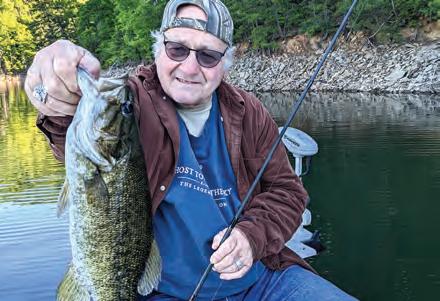
All this rambling is to point out that, as we mature (a nice way to say grow old), our priorities change. Last weekend, I took one of my son’s friends from high school out on Fontana. The leaves were brilliant; there was blue sky and clear green water. We found schools of spotted bass on almost every point, caught a few, returned them all and basically just cruised around soaking in God’s
creation. By the way, a white ice jig dropped into their faces will get hammered…this is supposed to be a fishing report after all. After coming home, I got a note from my friend saying the trip was one for the books. I wish that, at such a young age, I had concerned myself more with the being and less with the poundage, but that’s what’s good about maturity, you have time to get it right. If you want to just cruise around, give me a holler.
Later, Capt James.
Capt. James McManus owns 153 Charters. Give him a call for a great day on the water at (828) 421-8125.

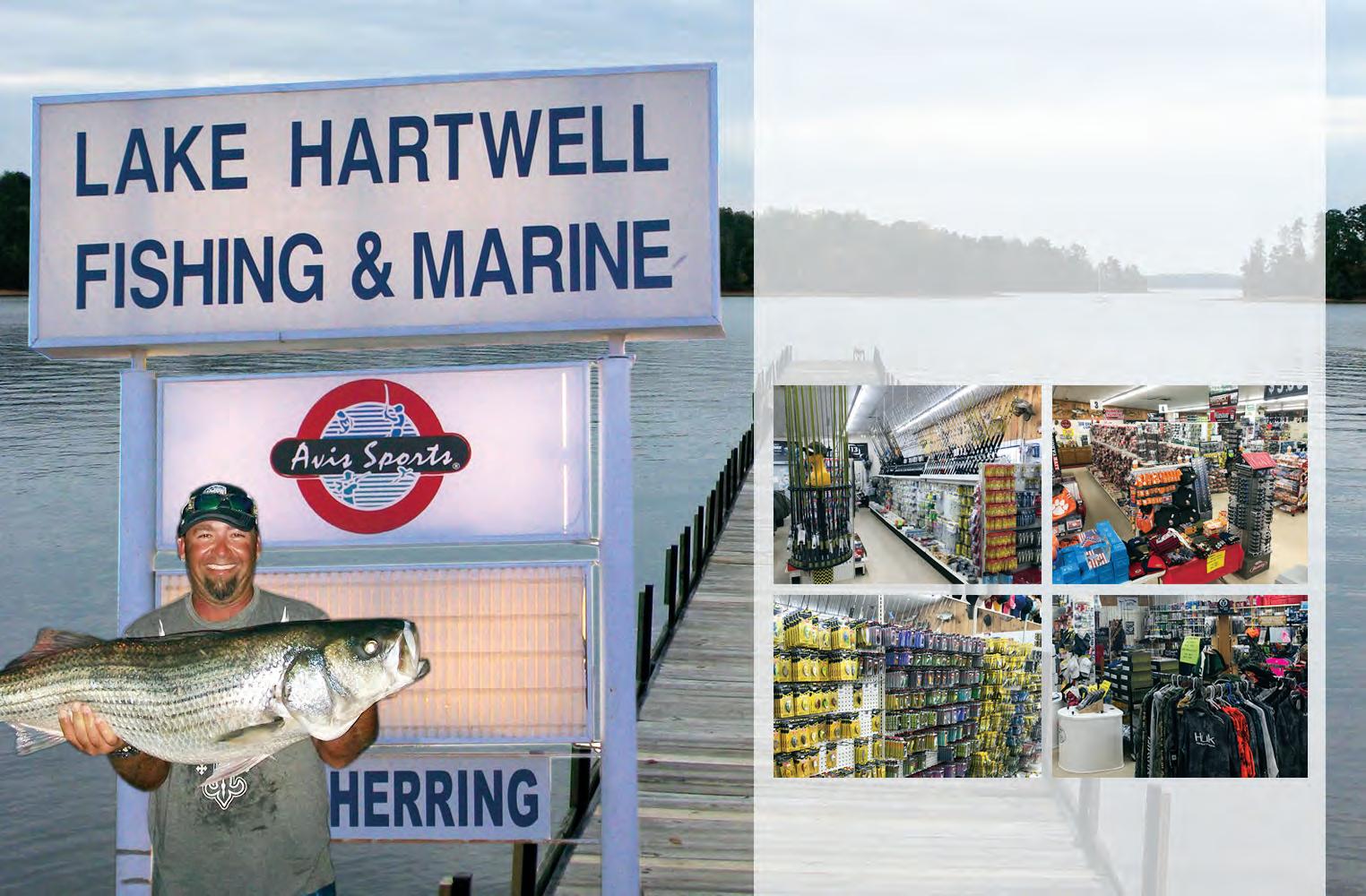

I’ve managed to accumulate a lot of fishing equipment over the course of my life. My basement is filled with fly rods and conventional rods hung and crisscrossed in a way that makes sense in my head. Tackle boxes filled with baits and bags of soft plastics that desperately need to be reorganized are stuffed into every cranny, and there’s still a massive pile of reels that I swore I would go through and “fix” before the end of this winter.
I say all this to say that I’ve made my fishing assortment extremely complex. I’ve got rods specifically for dry flies, jerk baits, and everything in between, along with crankbaits divided up by their wobble, sitting next to around 6 boxes of nymphs organized by color and size.
Digging through all of this mess, I managed to find some of my grandfather’s old fishing lures stuffed inside an old green canvas creel. I tell ya’, it brought back a lot of nostalgic memories of us fishing together when it seemed like fishing was so much simpler than
it is today. Random Rooster Tails, a couple of original floater Rapalas, and an old foam box of very simple fly patterns.
Staring at the thousands of baits and flies that I have accumulated over my lifetime, I’ve often wondered, “When did fishing get so complicated?”
Looking back through these old lures brought back some wonderful memories of my younger, more imaginative self. Envisioning in my mind the fish that may or may not hit my fly or lure in the river, and allowing my thoughts to drift with the current was all that was needed. It brought back smells of coffee, beechnut wintergreen, and being driven around in my grandpa’s old trucks. Memories of my fathers history lessons as we “loafed” around random back roads, which inevitably would end at a stream that I had to wet
a line in. Those images are still as warm and vivid in my mind as if they were yesterday. In addition, those experiences gave me a better appreciation for my home here in the mountains, and also added deeply to my now full time job as a professional guide.
It makes me wonder if, despite all our advances in the fishing world, we haven’t strayed too far off from what fishing should be about, and the life lessons that are encountered and pondered on a lazy mountain summer afternoon. Maybe, we should just keep it simple.
Ethan Hollifield is a member of a conservation organization called 2% For Conservation and a guide for Southern Appalachian Anglers

Fallcolors, beautiful scenery, and TROUT! It’s that time of year – Georgia’s Delayed Harvest Trout Streams (or, DH for short) open November 1st. While many (including me) have written on the topic, it’s always nice to revisit!

These types of streams are designated with special regulations from November 1st to May 14th:
• Stocked Monthly
• Artificial Only, Single Hooks only (droppers permitted)
The upper Toccoa River in Blue Ridge, Georgia is a beautiful DH stream that flows through the Chattahoochee National Forest and has access from Sandy Bottoms Canoe Launch downstream, to just short of Shallowford Bridge.
If you’re already up here with the family, this is a great place to sneak off for a morning or an afternoon.
By Jacob MilhollandMake sure that the river isn’t too high to wade! Use the U.S. Geological Survey Gauge at Dial Road (type in USGS Dial Road on google) to determine flow. I look for flows below 450 cubic feet per second if I’m going to wade the Toccoa DH. Don’t be afraid to explore around and fish different parts of the stream. Too many people have a tendency to stack up on a hole close to easy access.
Equipment: Trout are generally stocked in the 8-12 inch range, but some larger fish are stocked as well. A 9 foot, 4, 5, or 6 weight is sufficient on DH water. Typical Trout taper fly lines matched to the rod are perfect (SA Infinity, Rio Gold), as they allow you to manipulate your line and make mends more easily. Never forget the essentials! 3x, 4x, and 5x tippet in fluorocarbon (we are mostly nymphing), split shot in varying sizes from #4 – BB, some kind of strike indicator, and a wading
staff. Waders and wading boots are a must have if you’re fishing any of our area trout streams this time of year!
For the beginner, DH streams offer a place to learn trout behavior and build confidence in their skillset since these fish are not the most educated at the time of stocking. They are still acclimating to their environment. Fly selection isn’t nearly as important, so stick with big “junk” flies like San Juan Worms, Egg Patterns (Y2k’s), Mop Flies, and anything flashy or colored tungsten bead head flies like Pheasant Tails, Rainbow Warriors, Lightning Bugs, or Sexy Walt’s! As these fish become accustomed to their new homes and are pressured by other anglers, they will start to feed more heavily on the naturals and can grow weary
of junk flies, but I still keep junk flies in my rotation, in addition to all of my more typical patterns.
Fishing the swing, or lift, can make for an awesome day on DH water. At the end of my drift, I will swing my flies in the current until they are completely downstream. If you don’t have enough room to get a full swing in, try slowly lifting your flies at the tail out of a pool or in front of obstructions (Boulders, Laydowns, etc). Both of these actions will bring your flies up higher in the water column, as if they were emerging insects – fish love it!
Whether you’re fishing the area DH streams, floating the Toccoa Tailwater, or chasing bass on the lake, this is a gorgeous and productive time to be fishing! Come by and see us at the shop.
Jacob Milholland is the Store Manager at Cohutta Fishing Company, located at 490 East Main Street in downtown Blue Ridge in Fannin County, the Trout Capital of Georgia! You’re always welcome to call us here at the shop for a quick fishing report as well – (706) 946-3044.

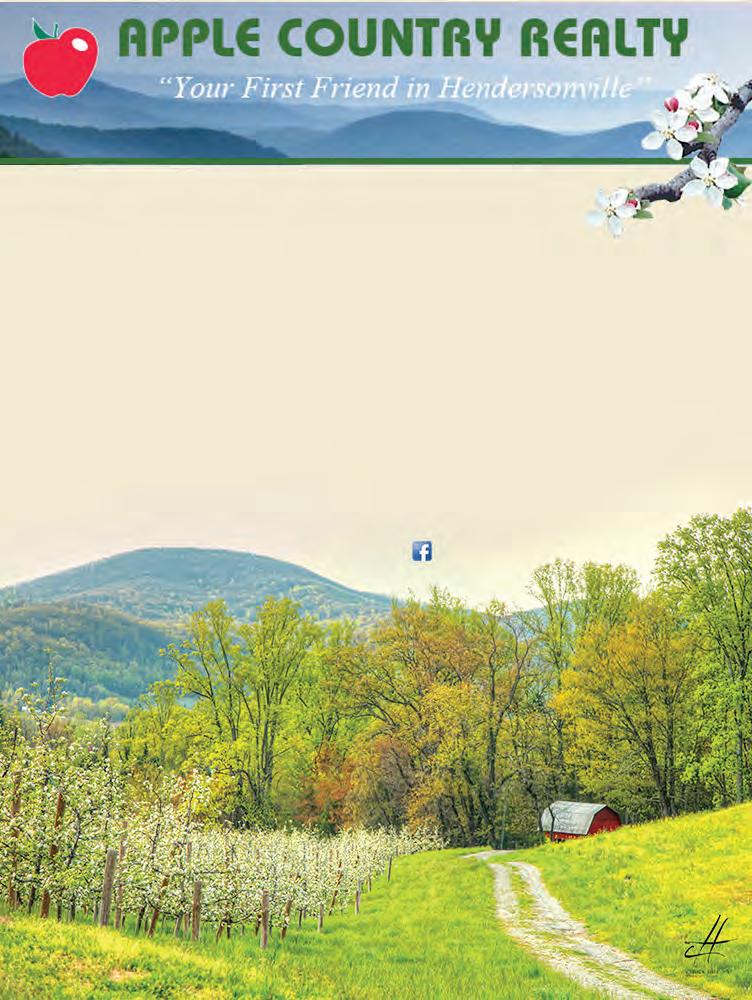
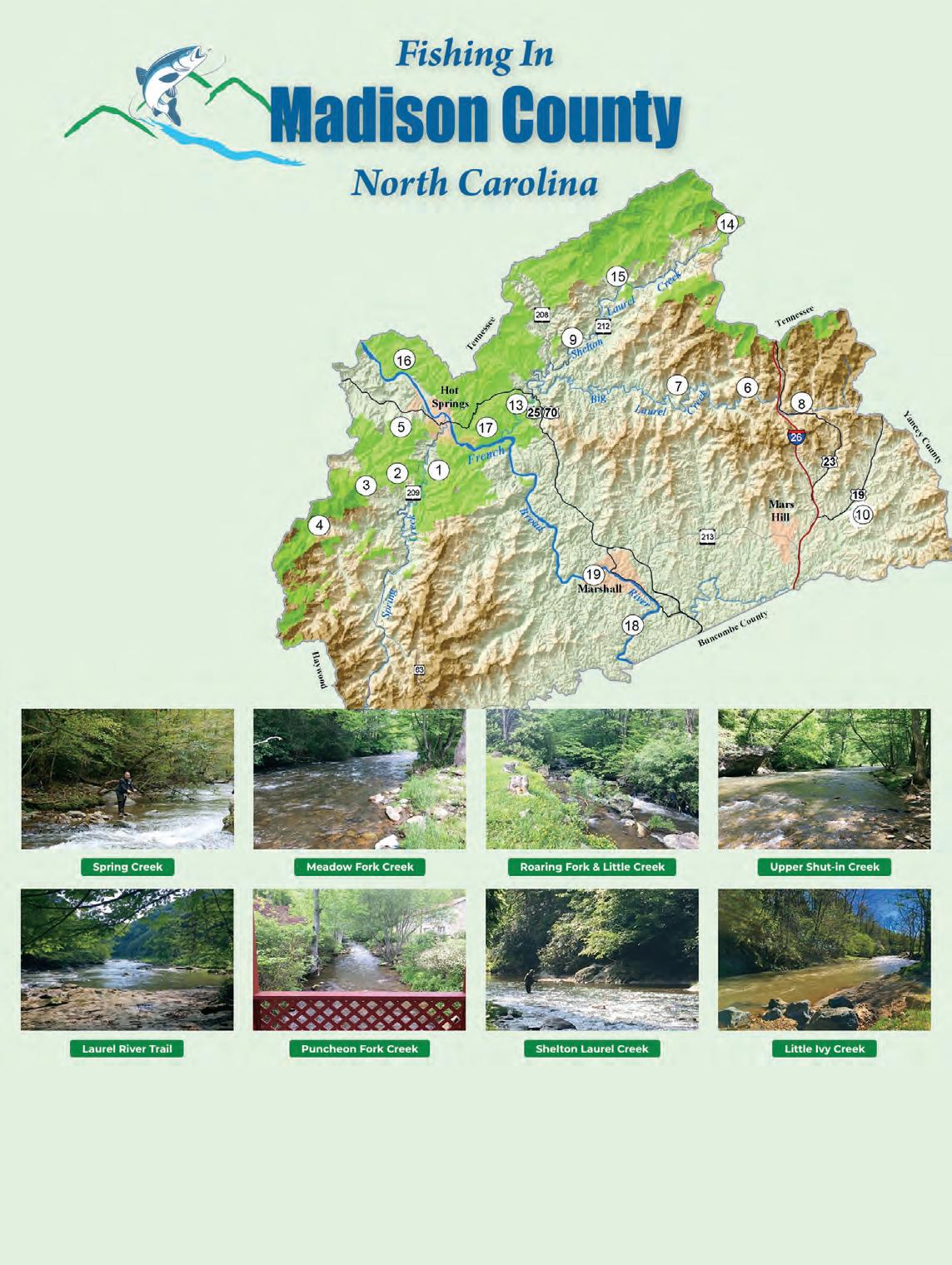
folks, Hope everyone is doing well! My favorite time of year is here. Cooler temperatures and beautiful coloring on the leaves; you just can’t beat fall weather in the Smokies.
Fishing has been awesome lately with a variety of species hitting from walleye to rainbow trout, steelhead, and a variety of bass
species - it’s just been really good. I’ve been doing mostly trolling trips, but by the time this magazine hits the shelves, we should be able to catch a lot of fish by throwing live and artificial baits to the bank. I love the early morning bite but we should be getting a longer feed as the water temperature continues to cool.
It’s been a good fall so far and
Fontana Lake Fishing Guides – Ronnie Parris, Owner & Head Guide LAKE, CREEK & RIVER FISHING • FLY FISHING • CAMPING
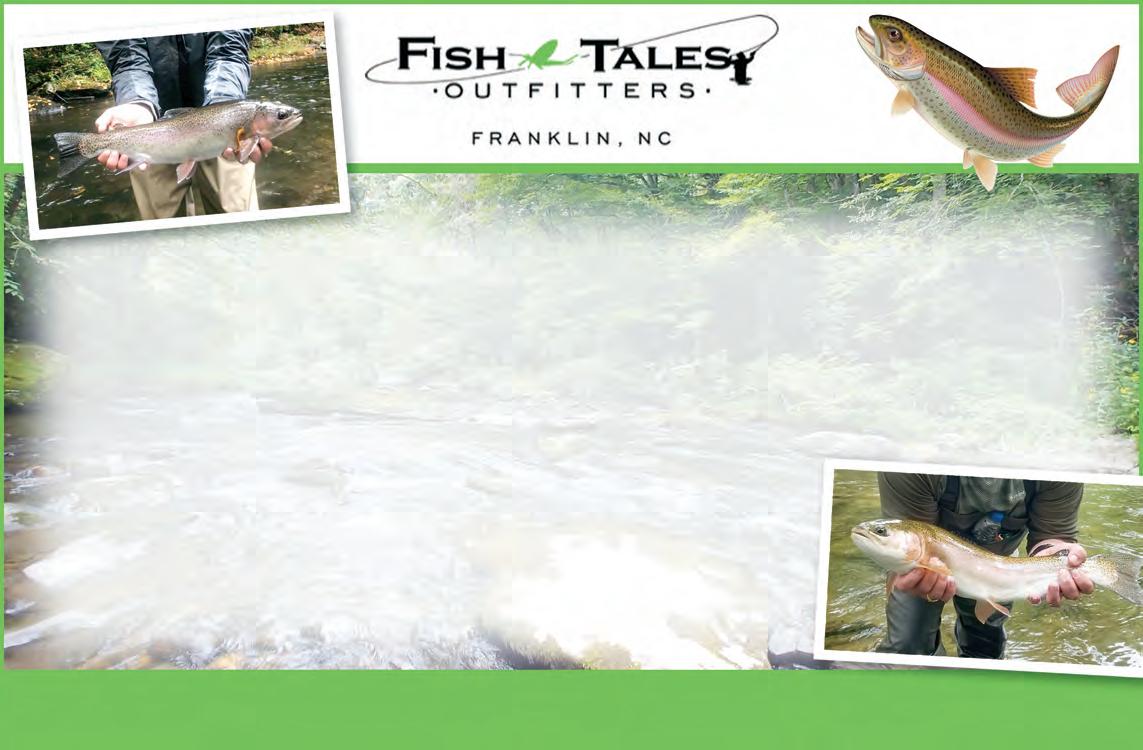
we’re seeing lots of bears feeding on the shoreline of Fontana. For some of my customers, it’s their very first bear sighting. We’ve seen several deer swim the lake too. Spoons and small Rapalas seem to be what’s been preferred lately, but I think the Keitechs are gonna’ really pick up and be the preferred bait in the next few weeks. It’s hard to beat a good bass minnow when the fish are up
close to the shoreline feeding. This is a great time to get out with family and enjoy the outdoors. Dress warm for the morning but layers are a good idea since it warms up fast. This is a great time to take kids since the temperature is so good and the bites usually great. Go out and have fun and make memories. As always, remember to take a kid fishing.
Ronnie Parris is owner and head guide of Smoky Mountain Outdoors Unlimited-Fontana Lake Fishing Guides, headquartered in Bryson City, N.C., heart of the Great Smoky Mountains www.smounlimited.com; (828) 488-9711.
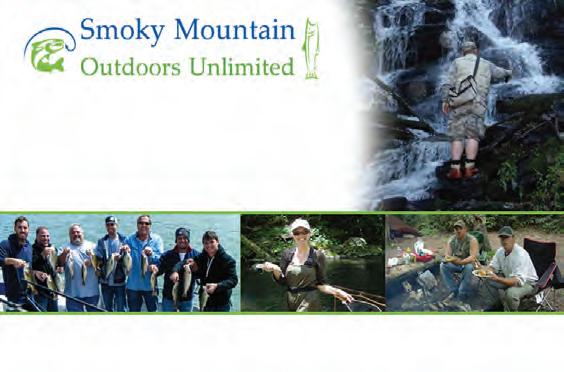


 By Scott Norton
By Scott Norton
Bass have been on the move for weeks now and they should be settling into the fall pattern. Just like the spawn, bass will come into this pattern in waves but if you have been fishing the transition, these bass have been on the move. You will find them one day and they’re gone the next. In those different waves are two groups of bass, those in the deep and those in up shallow. Those up shallow will hold to hard cover to ambush forage and the ones down deep will corral and push shad to the surface where bass have the advantage.
When selecting baits for this kind of application, think of shad, or small panfish on their menu. Lures to use for bass up shallow are square bill cranks, flukes, spinner baits, glide baits, and top water walking baits. Targeting bass in the deep, I recommend deep cranks, spy baits, jerk baits, blade baits, flutter spoons, burrito baits, lipless cranks, swim baits, and top water walking baits. These baits will

cover all the situations you come across in the fall. There are more baits that a will work, just make sure they imitate shad or pan fish. In fisheries, they feed on crayfish so imitate this around rock.
Where these bass end up are backs of the bays, creeks, and fingers. They will eventually push all the shad in all these places and then they will feed there until the water cools to a winter temperature. Once they reach this destination, you will see these bass go into a frenzy feeding up for those winter months. Just make sure you adjust your baits’ action to the attitude of the bass. Do not use slow finesse baits during this time. Use the reactive, loud, and flashy baits instead. Aggressive baits will fire up schools of bass and you can load the boat with numbers of fish.
Another advantage in the fall is that most anglers turn to deer hunting at this time, and the crowd will thin out the closer you get to those hunting seasons. There is lots of great fishing all the way into

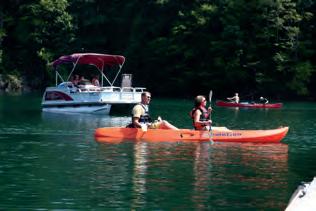
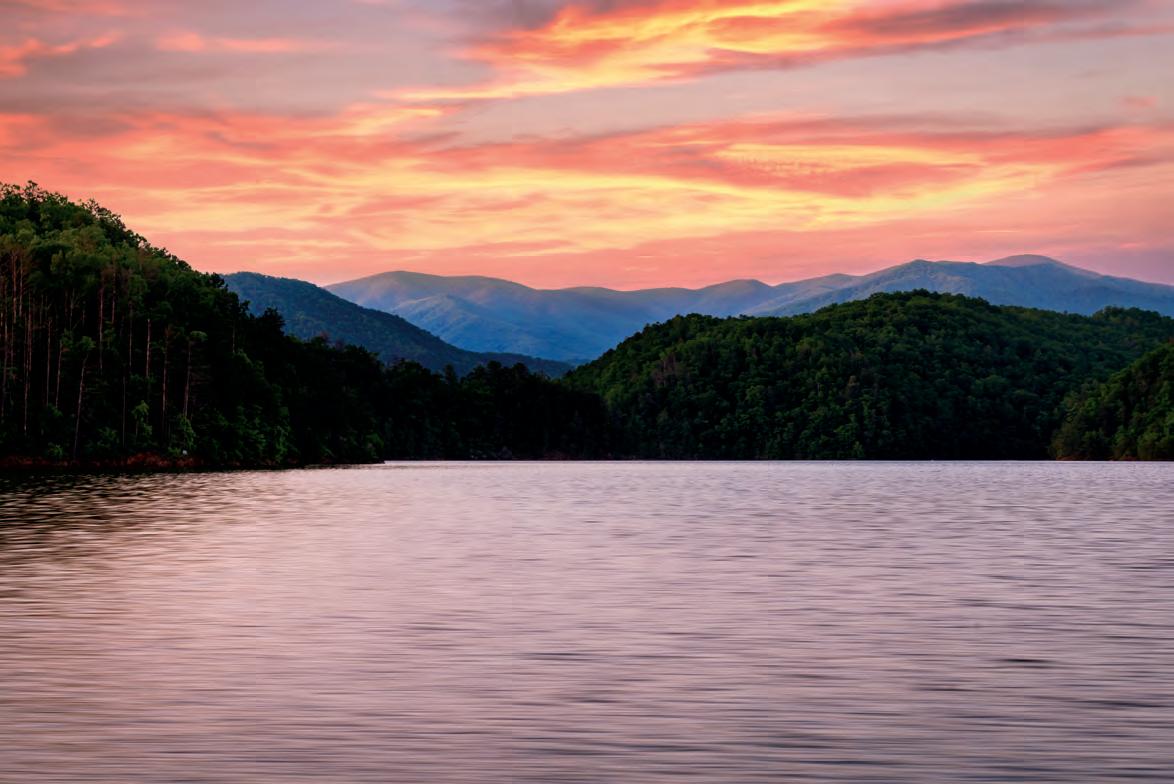
deep winter if you’re determined to keep fishing. Your opportunities will grow for bigger and better bass, especially in the winter. Just prepare
for those cold mornings. Being comfortable helps you focus on the prize. Have fun this season and introduce a new person to fishing.
Scott Norton is a Western North Carolina native. Born in Asheville, N.C., he is a long-time hunter, angler and weekend warrior.
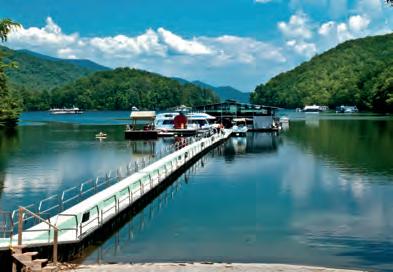

In the history of timepieces, few moments were more consequential than the advances of the 1920s. Currently, inflation is roaring, which we’ve decided to fight by turning our prices back to the 1920s.

During that era of jazz, speakeasies and flappers, wristwatches came into their own, resulting in some of the greatest designs of all time. It’s that legacy that we’re honoring with the Vintage ’24 Watch, available exclusively through Stauer at a price that only we can deliver.


Before World War I, most people carried pocket watches. In that conflict, soldiers adapted their old pocket watches so they could be worn on their wrists as they dove in and out of trenches. By the war’s end, nearly every soldier wore a wristwatch. In peacetime, demand flourished, as did fantastic designs by some of the greatest watchmakers we know today.
That’s where we come in: Instead of charging you $20,000 for a jazz age-style timepiece from some overpriced marketing department, we’re asking for just $29 for an even more stunning watch! We’re talking about a gorgeous two-tone timepiece with a durable Cotswold™ crystal and a precision movement that vibrates at a frequency of exactly 32,768 times per second! With its guilloche-patterned face and refined Roman numerals, this watch is where innovation and class meet.


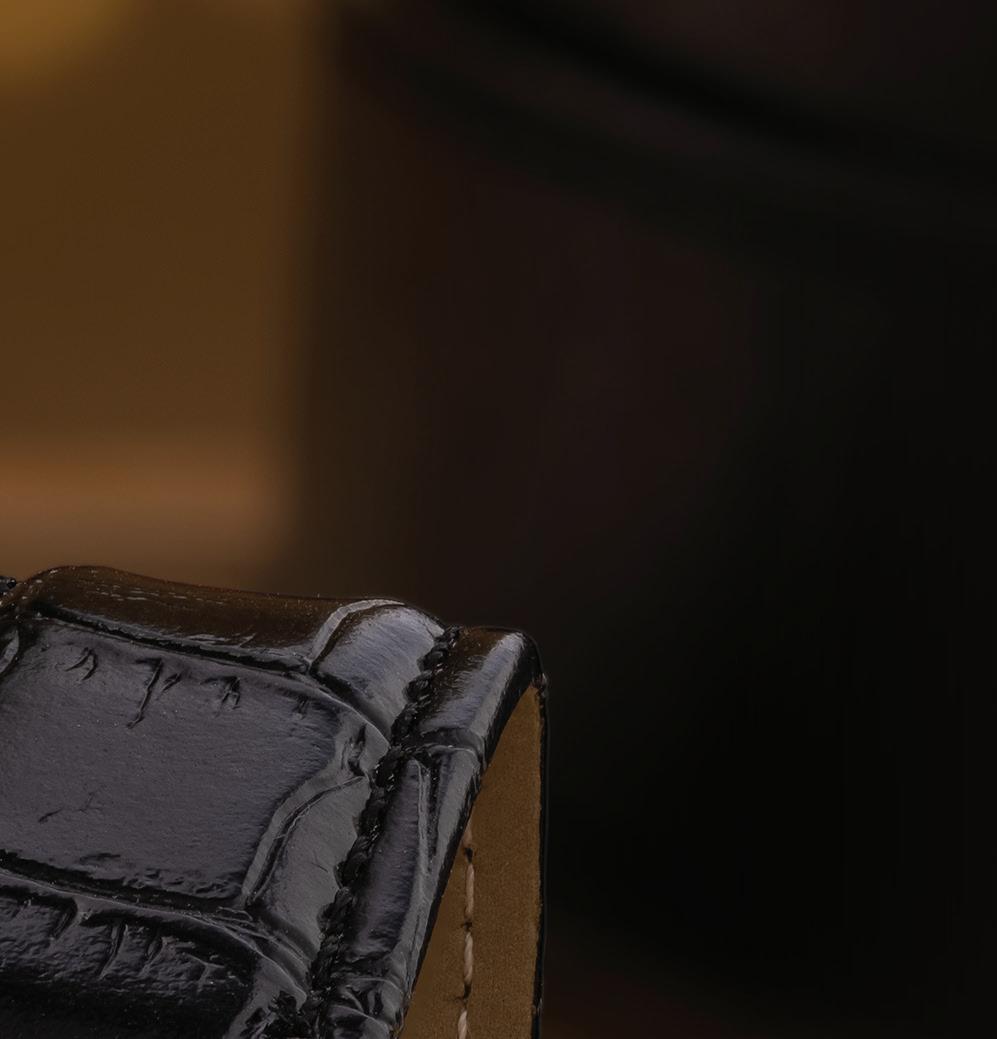

How are we able to extend such an incredible offer at such a low price? Through the use of modern technology, our artisan watchmakers are able to craft a timepiece that’s more accessible and even more beautiful than watches from our competitors. Call today to secure
own marvel of timekeeping history. A
like this doesn’t come along every day. Because of the time it takes to craft these stunning mechanisms, we can only offer 1,237 846 with this ad. Call today before they’re all gone.
time
engineering masterpiece for
for less, simply send it back within
for

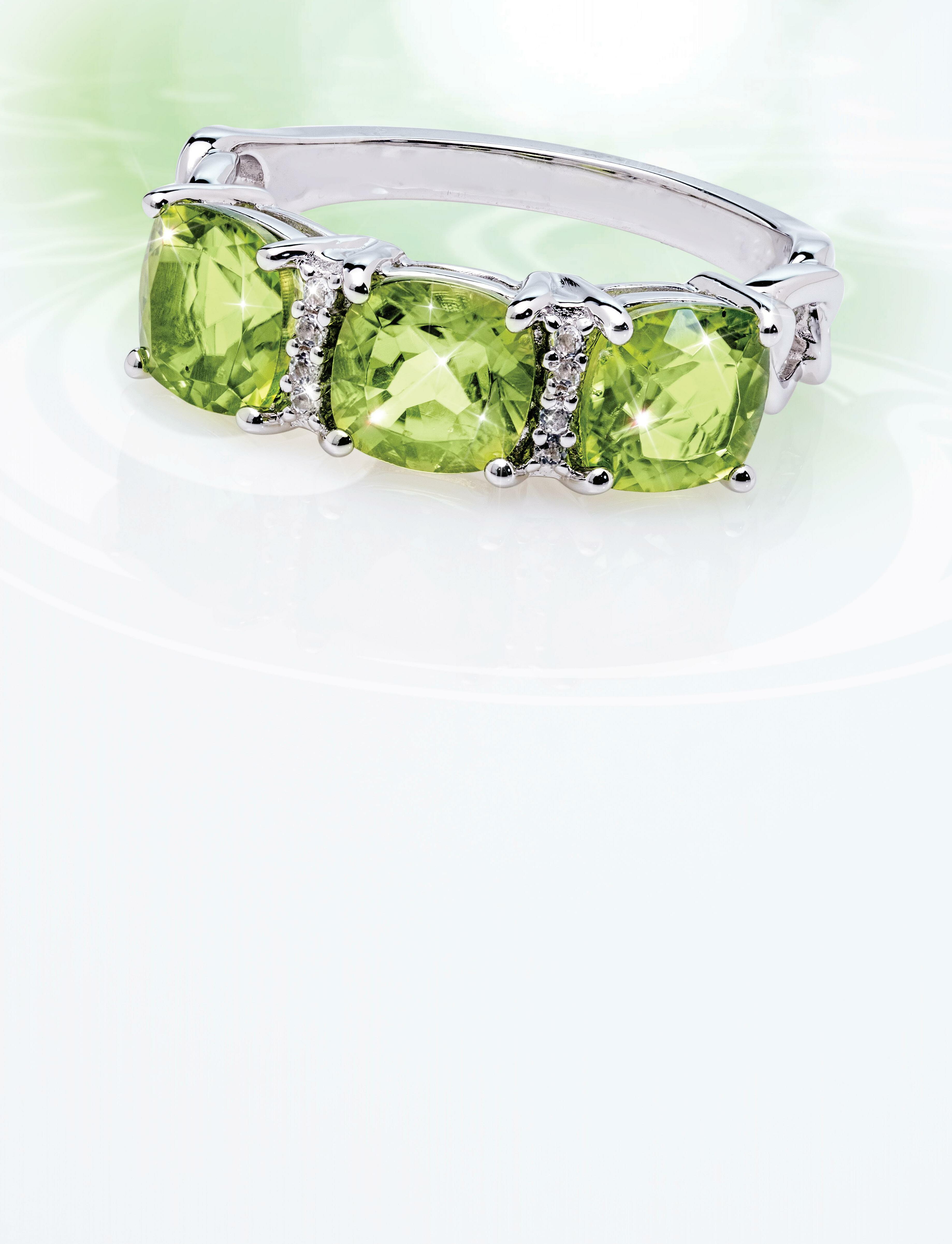
In September, I embarked on one of the craziest adventures I’ve ever experienced to sh for crazy exotic species on the Rio Guaviare deep in Columbia’s Mapiri Jungle.
Just getting there was an adventure. We spent two days ying from Miami to Bogata and then to San Jose, Colombia, which was a buzzing little town where we picked up last minute supplies, ate a breakfast of pirahana head soup and got wrist bands tied by an elderly women and her pet spider monkey, Kiki.
At the port, we loaded gear in a small shaded boat powered by a Yamaha 200 2-stroke, with a spare lower unit tied on top. I was accompanied by my cameraman Adrian, from Poland, good friends Jake, Derek, Karl, and our jungle guide Diego, from Chile.
We set out downstream and rode for hours, passing through two army checkpoints, before we reached our halfway point at 118 miles. We stopped for lunch and to refuel at an isolated jungle town only accessible by boat. As we creeped up muddy stone steps, we were shocked to see a small town with convenience stores, restaurants, a playground, a basketball court, and happy people everywhere. It was a cool window into a di erent reality.
A er playing soccer with the local kids and a delicious fried sh lunch, we headed farther downstream. When darkness arrived, the jungle came alive and our driver did not feel comfortable navigating the rapids at night. So we stopped and Diego traded goods with an indigenous man for permission to sleep at his house. Some opted to sleep in the boat. e mosquitoes, hornets and massive cockroaches made it tough to sleep. A er long hours, the sun nally rose, and we headed another 45 minutes downriver to base camp, where we discovered we were in for even more travel.
We packed lighter for three days of shing and camping at a sacred waterfall inhabited by one of the jungle tribes. It was another 2.5 hours downstream to a small creek that would lead us up to a second camp. We shed our way up the creek.
On my rst cast, a 15-pound sardinata exploded on my popper boatside. Imagine a huge pilchard but with sharp teeth and hyper-aggressive topwater strikes. Fully grown, Sardinata can weigh 25 pounds. is one threw the hooks, and shing only got crazier from there.

I was throwing a 9-inch Countdown Rapala in Firetiger at the tree line and retrieving it to the boat. Almost every cast we hooked massive payara. is sh is similar to a tarpon, with silver scales, acrobatic leaps and a bony mouth that made hook sets di cult. Payara have long fangs on their lower jaw capable of slicing thick-scaled sh and shing line with ease. ey are without a doubt the most challenging, unique and aggressive jungle predators I’ve ever targeted. I managed to catch quite a few on y and spin tackle.
Another unique species was a matrinxa, a silver-scaled delicacy. ey are omnivorous and sit below trees to eat dropping fruits and nuts. ey also hit lures with insane power. ese sh were extremely hard ghting and very tasty. ey have teeth like human molars for cracking hard nuts.

Red bellied pacu are another ferocious species we caught. ey have a similar ambush style and diet to the matrinxa. ey are equally aggressive and display gorgeous hues of purple and black
Iwith a blood orange/red underbelly. Black and red bellied pirahana were in no shortage, either. A er three days of shing by the waterfall, we headed back to base camp for new species.
Heavy rains raised water levels, which busted our hopes to catch big peacock bass. But it opened a new door: catching monster cat sh.
I caught several new species of large cat sh. One of the most unique was a ripsaw cat sh. ey have so lips and a long face, similar to carp. ey also have a sharp chainsaw blade for a lateral line, earning them the nickname “Caiman Killer.” I caught small tiger shovelnose cat sh, as well as red tail cat sh. Red tail cat sh are one of the strongest ghting cat sh I’ve ever encountered. It took three days of break-o s before I was able to muscle one up. It weighed 40 pounds.
Fishing the jungle is tough, and it is not for everyone. is trip scarred me with bug bites from head to toe, and I su ered many bee and hornet stings. It is not comfortable in any sense, but it is good for the mind. ere’s no cell phone reception; you are stripped of everything. e only thing that matters is the present moment. For me, it is the biggest adrenaline rush to travel into the unknown and learn about new shing and culture.
Check out Ryan Izquierdo’s YouTube Channel, “Ryan Iz Fishing” for a series called “Jungle Jeopardy.” E-mail him at Ryanizquierdoyt@ gmail.com with questions or to nd out how you can go on one of these trips.


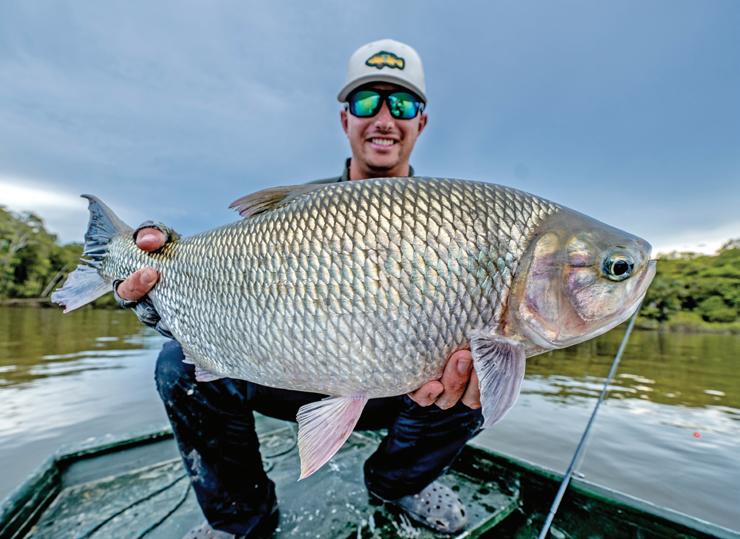



“Known as ‘the Evening Emerald’ because its sparkling green hue looks brilliant any time of day.”
— The American Gem Society (AGS)

Going over the top on jewelry doesn’t have to mean going overboard on the cost. We’re in the business of oohs and ahhs without the ouch, which is why we can bring you an e ervescent verdant peridot ring for a price that simply can’t be beat. Its vivid and unique color makes verdant peridot unlike any other green gemstone. If you are looking to mark a milestone or make any occasion special, the Verdant Peridot Ring is all you need.
is elegant ring features 2 1/3 carats of captivating verdant peridot in three perfectly-faceted cushion cut gemstones. And, the .925 sterling silver setting is nished in tarnish-resistant rhodium for added durability and superior shine.
“Found in lava, meteorites, and deep in the earth’s mantle, yellow-green peridot is the extreme gem”
Gemological Institute of America’s Gem Encyclopedia
Peridot• White
You could easily spend $400 on a sterling silver ring set with peridot stones. But, with Stauer in your corner, the sky’s the limit for a ording the extraordinary. Priced at just $39, you can treat her to the Verdant Peridot Ring set in .925 sterling silver and save your money and your love life all at the same time. Satisfaction guaranteed or your money back. Indulge in the Verdant Peridot Ring for 30 days. If you aren’t perfectly happy, send it back for a full refund of the item price. Limited Reserves. Don’t let this gorgeous ring slip through your ngers. Call today!
PRAISE FOR STAUER PERIDOT JEWELRY “...absolutely beautiful. The picture does not do it justice. It is a real stunner.” – S. C., Berkeley, CA
Verdant Peridot Ring (2
Special
Stauer.com without your
ctw) $299† $39 +S&P Save $260




price.
TPR 6
code.
14101 Southcross Drive W., Ste 155, Dept. TPR256 02, Burnsville, Minnesota 55337 www.stauer.com
Rating of A+



sterling silver setting • Whole sizes 5-10 Stauer… Afford the Extraordinary


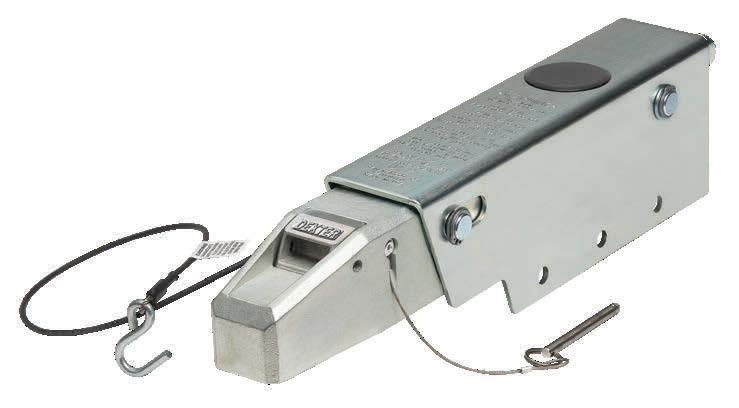
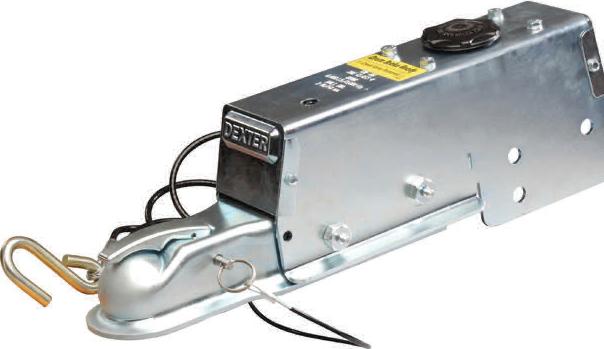




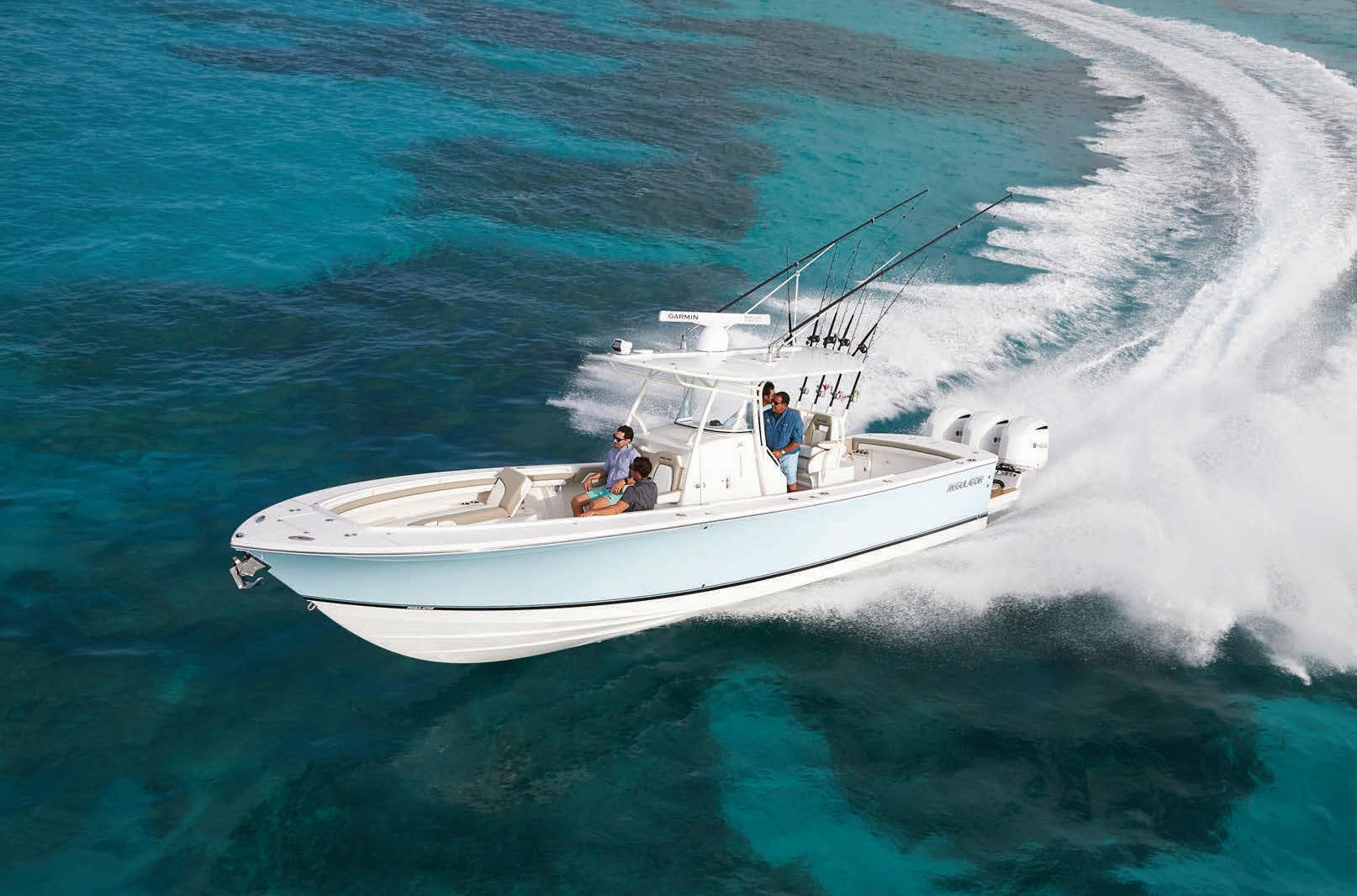



















more to Alaska’s Kenai Peninsula than world-famous salmon runs. e saltwater shing is also phenomenal, with species like halibut, salmon shark, ounder, yelloweye rock sh and ling cod being primary targets.

When you run out of Seward to Resurrection Bay, you might see some of the Deadliest Catch boats, and you might see multiple species of whale. We saw a lot of humpbacks this past summer. At more than 900 feet deep, with glaciers around the rim, the bay is awe-inspiring. ere are several good charter operations. Some make long runs for big halibut, while some o er shing that’s a little more local. Check with J Dock Fishing Co. in Seward for the latest shing information and charters. If you’re more of a DIY angler, Miller’s Landing in Seward o ers lodging and charters, and they also rent boats and shing equipment. If you want this option, book early. I have mine booked for next year, already.
Homer is the Halibut Capital of the World,

and it’s another great Kenai destination. We went with some friends and got on some good Halibut! I’m new to the electric reels we used. You had to time the hook-set just right. It took several bites to gure it out, but we caught sh once we got the hang of it. I pulled one a good way o the bottom before it decided it wasn’t coming in and broke a 150-pound-mono leader! We caught several good keepers and turned the smaller ones loose. ere are plenty of charters in Homer. North Country Charters is a great one that o ers halibut and salmon trips. ey will put you on some big halibut. My largest weighed 99 pounds, but North Country catches sh that are much larger.
If you want a long-run charter, check out Casino Charters. If you want to catch sh from the beach, check out Family Shore Fishing. ey set you up with a guide, shing rods and bait at Lands End, which juts out into the bay. Fishing low tide on the shelf, you can catch cod, ounder and halibut. We lled a cart with cod
and ounder in less than two hours shing from shore. en we went back another day without a guide and wore them out again!
Fishing in Alaska is just like anywhere else, once you learn what works, you can do it over and over. ere are lots of di erent kinds of shing there, but once you learn where and how to catch them, you can do it yourself.
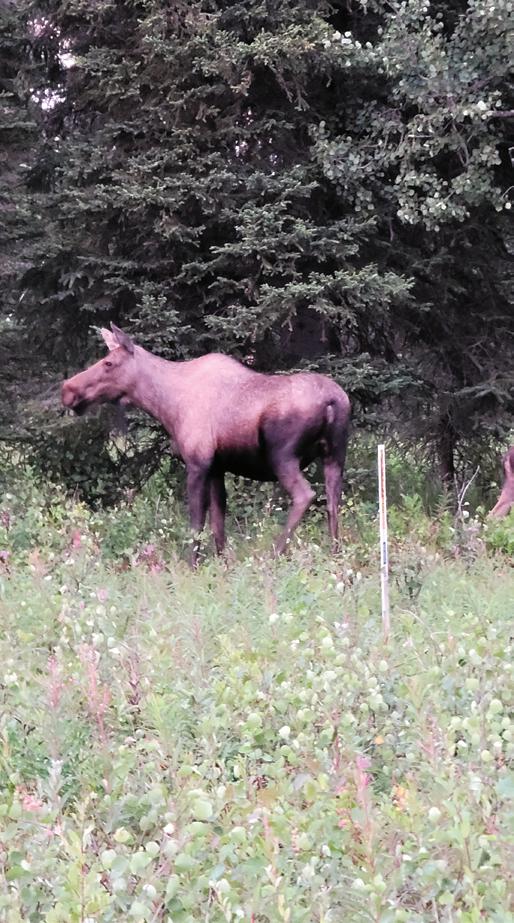



On this past summer’s trip, as we were headed to the airport to go home, we drove along Cook Inlet and spotted a school of beluga whales swimming the shoreline. You never know what you’ll see in Alaska. Some things are just so amazing!
I’m currently pulling together next summer’s trip to Kenai, and I’m making a short guide of things traveling anglers might want to know. Feel free to shoot me an email with questions.
For more information, contact Gary Turner at gary@purgeright.com.

About 50 years ago, Ralph Vodicka lost one of his favorite rod and reel combos when his boat capsized in North Carolina’s unpredictable Oregon Inlet. Recently, Vodicka was reunited with his 9-foot rod equipped with a Fin-Nor 4 spinning reel, and it still works!
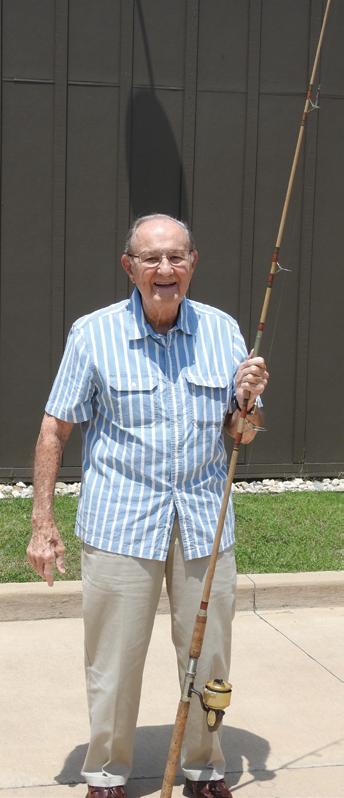
Here is a brief recount of the amazing story reported by Summer Stevens in e Coastland Times.
In fair weather in the early 1970s, Vodicka and three buddies attempted to return through Oregon Inlet a er shing o Hatteras National Seashore in a 17-foot 1966 Boston Whaler. e outgoing tide colliding with incoming rollers created rough conditions, even for a large trawler the anglers watched navigating the inlet. Vodicka was faced with a decision. ey could either wait for the tide change, which would force them to make their run in the dark. Or they could go for it.
“Waiting it out would put us in the middle of the night,” Vodicka remembered. “We decided that the best choice was to race on in while we could see. I told everyone, ‘Hold on, don’t move. We’ll ride on the back of one of the breaking waves. Even if it takes a little water, it’ll be ok.’”
In the middle of the inlet, as they were taking on water, a line caught in the prop and it stopped turning. e boat was at the mercy of the tide and waves, and an 8-foot breaker ipped it end over end. e story of the exciting rescue is reported in detail in e Coastland Times. It involves the captain of an old 25-foot boat and his grandson risking great peril to time the waves and rescue each of the anglers one at a time. Vodicka’s badly damaged Whaler was later recovered, and he lost a bunch of shing gear, including the rod and reel that began this story.
e details are lost to time, but apparently the Fin-Nor reel and the rod were hauled up in a commercial angler’s net. e unique set-up ended up doing decades of duty as a showpiece on the wall in Dennis Dudley’s Elizabeth City, North Carolina home.
Vodicka,” and Dudley tried to locate the Fin-Nor’s owner when he received the rod in the mid-1970s. Dudley’s phone book searches came up empty, and the search was forgotten… until recently.
Dudley, 78, remembered the mystery of the reel’s owner while going through his possessions. A quick Google search turned up Vodicka, who is 89 and living in Raleigh, N.C. e men met to eat lunch, and Vodicka was reunited with the beautiful rod and reel he lost half a century ago.
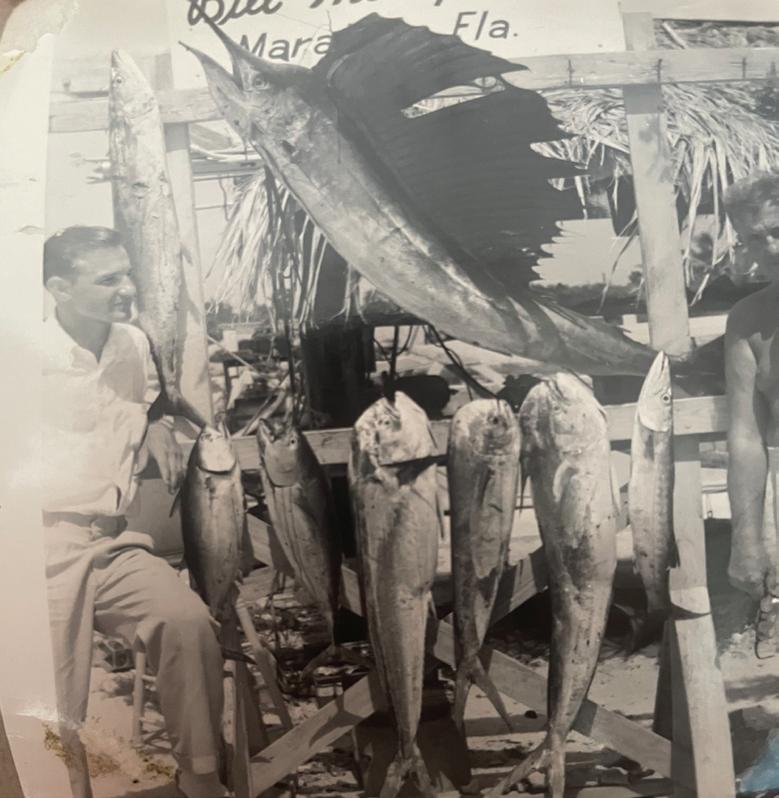

Amazingly, the antique Fin-Nor is already back in action. Instead of hanging it on the wall, Vodicka had it serviced and used it on the Neuse River over Labor Day weekend.

e reel was equipped with a custom plate engraved with “Ralph E.
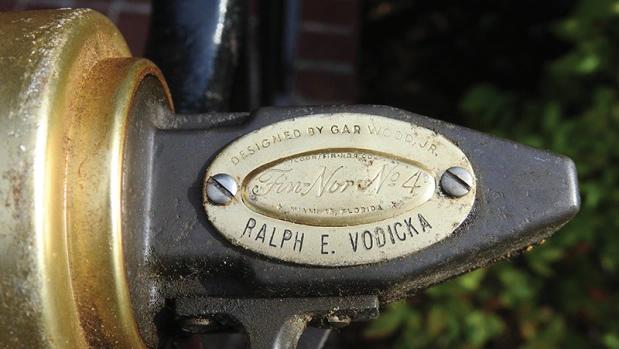

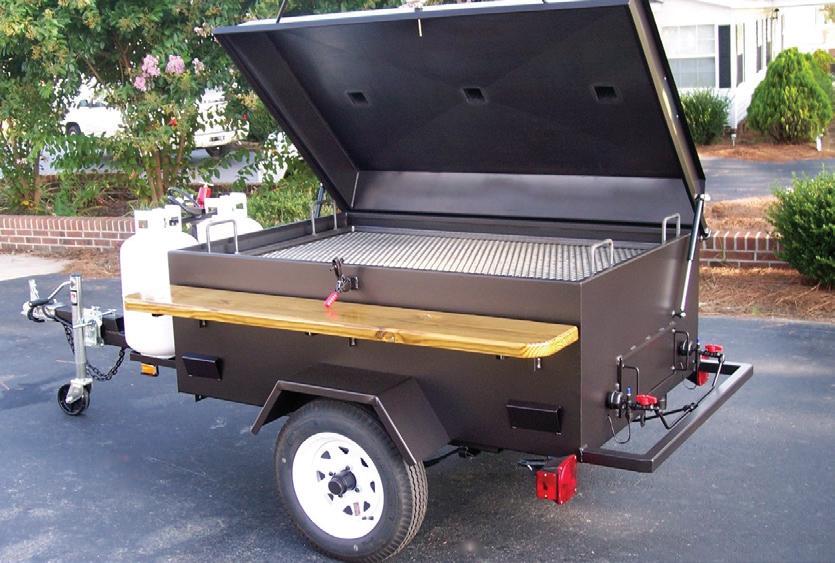

“It worked. It worked ne,” he said. “It’s amazing that a er 50 years you get your favorite rod and reel back.”
To read the whole story, go to www.thecoastlandtimes.com.
Everyone hates a cheater, which is why it’s no surprise that tempers ared when two cheaters were caught red-handed at a Lake Erie Walleye Tour (LEWT) event on Oct. 1. e event was the tour championship for the series, and the Team of the Year would also be crowned a er weigh-ins. Team Crankin’ Hogs brought to the scales a ve- sh limit that weighed more than 33-pounds. It It would have secured Jake Runyan and Chase Cominsky well over $20,000 for the championship win and for Team of the Year honors. ey overplayed their dirty hand.
Tournament Director Jason Fischer suspected something was amiss when the sh hit the scales. Fischer later told CNN that the sh looked like they should have weighed 4 pounds each, but the total weight indicated they were much heavier. He handled the sh and felt something hard inside one of them.
In a now-viral YouTube Video, Fischer guts the sh as the cheaters stand by silently. “We have weights in the sh!” Fischer announced, and that’s when the shouting started as other anglers hurled obscenities at Runyan and Cominsky.
All-told, there were 8 pounds worth of lead weights, llets from other walleye and a pair of pliers inside Team Crankin’ Hogs’ sh. ey were immediately disquali ed and banned from the tournament series. Both men were later indicted by an Ohio grand jury on charges of cheating and attempted grand the .

It will be interesting to see if the team’s other tournament wins are called into question. ey have won numerous events over the last couple of years, including the 2021 LEWT Championship.
For more information, go to lakeeriewalleyetrail.com.
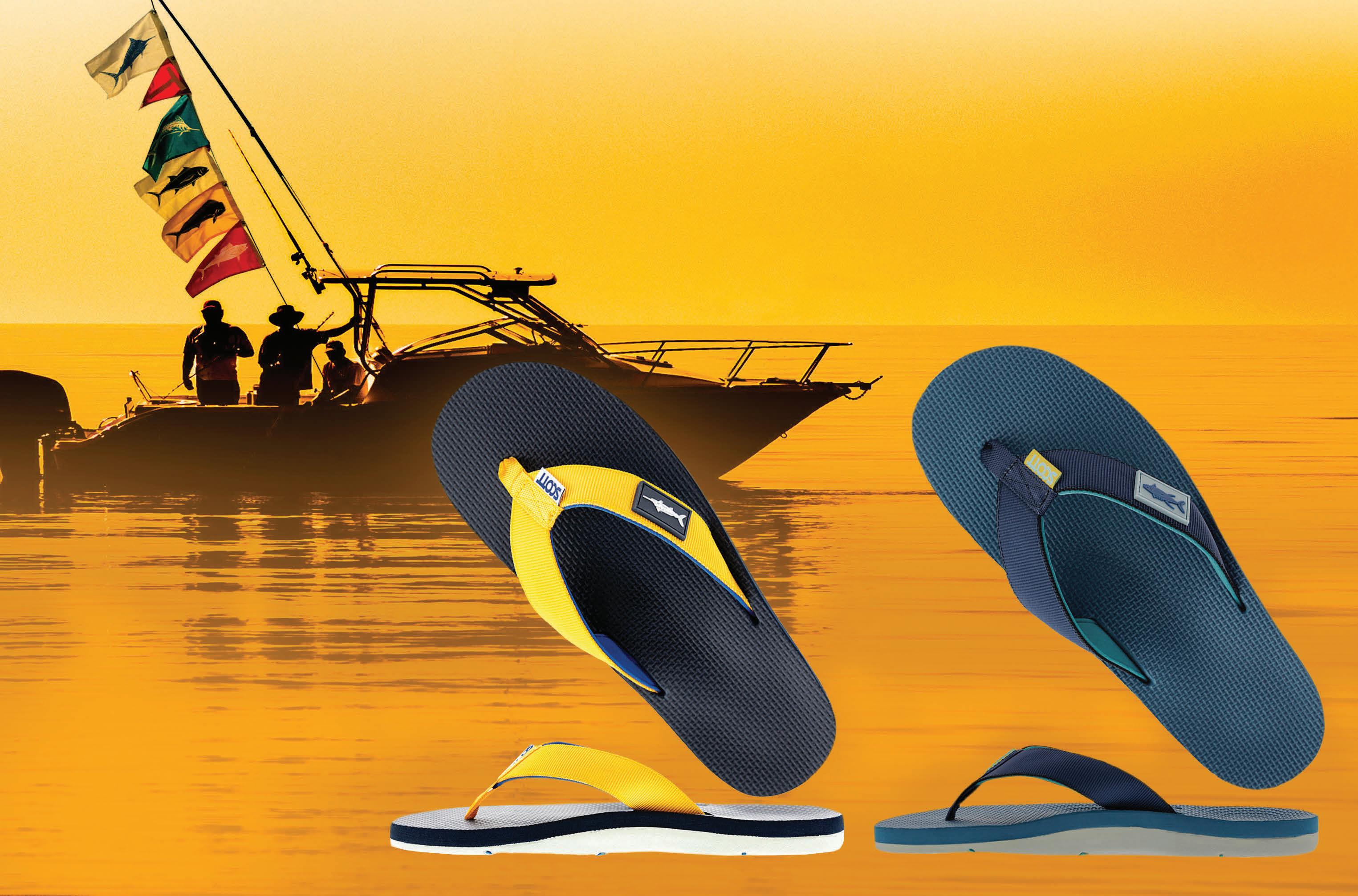

You raise the flags of the fish just caught to show you weren’t skunked.
Once onshore you can take it a step further showing your fellow anglers your catch of the day wearing “slippahs” from Scott Hawaii.

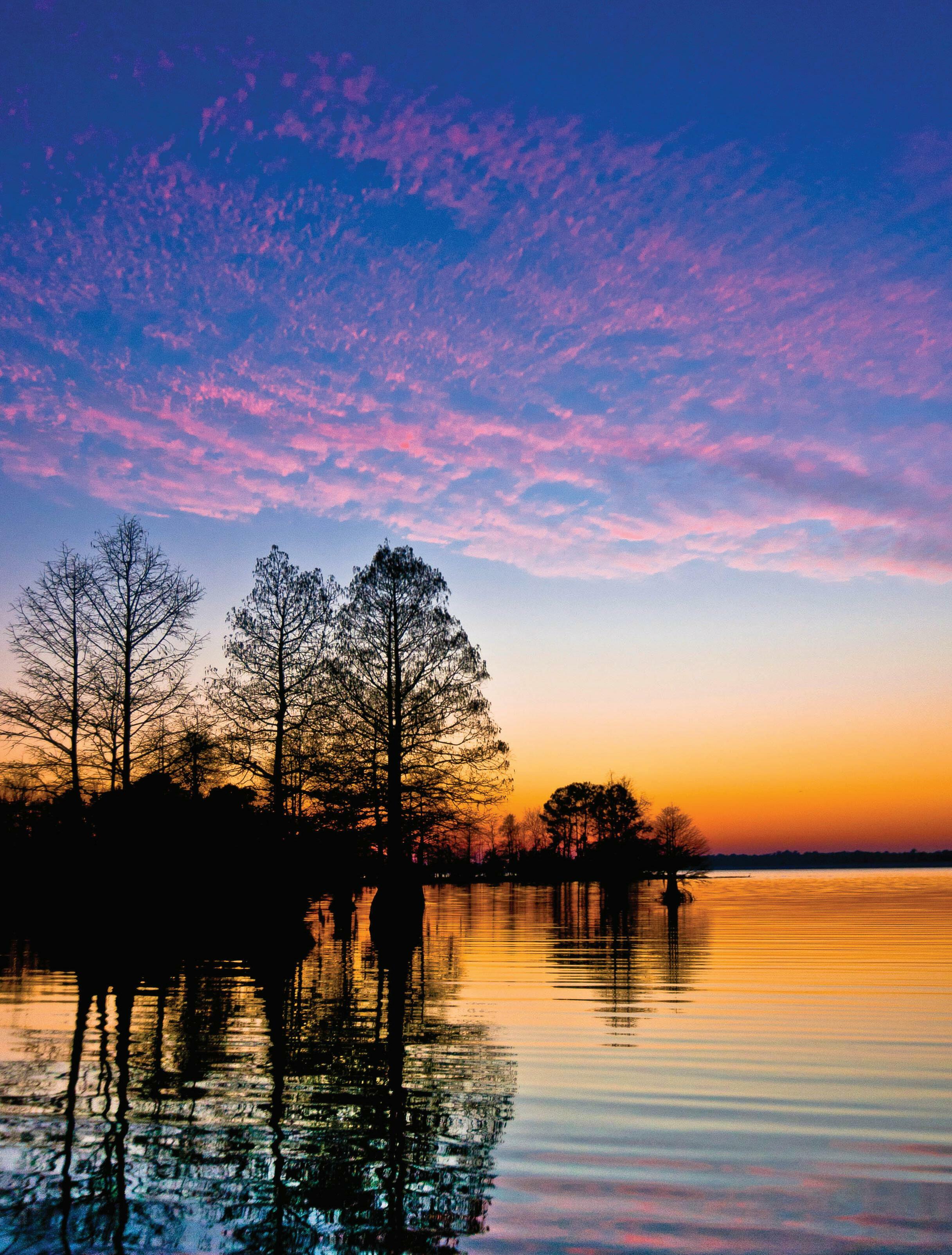
Berkeley County is a wonderland for outdoor enthusiasts, sports bu s, adventure seekers, and water lovers. From exemplary fishing for striped bass, or a trophy largemouth bass, to our hiking trails and water activities, along with scenic outdoors where you can catch a glimpse of white tail deer and gators, Berkeley County has activities to fit all visitors and families.



one



look
men’s watch has always
world of fashion.


functionality has long been the







After many years, mastering and honing the construction, design, and look. We bring you a durable rubber strap that will withstand everything the elements throw at it. Three precision sub-dials featuring a split second, minute, and second, as well as being water-resistant to 3ATM’s. This watch is the epitome of style and sporty design.

Your journey is at an end you can rest in the knowledge that this superb-looking timepiece will stand out on the wrist. High-quality materials and design will endure the ravages of time both in terms of remaining fashionable and stylish yet durable enough to be worn every day whether at work, rest, or play.

When we rst introduced this outstanding looking timepiece we sold out within days especially considering the very special lowcost o er of only $99 plus S&H. To avoid disappointment hurry and order today using the toll-free number below and quoting the promo code or by visiting our online store and entering the code before checkout.




